|
1. GEORGE
SMITH (Source: Antonio Smith document, 16 May 1903.) was
born in NY (Source: Antonio Smith document, 16 May 1903.). He married
ANN MARY MOTT (Source: Antonio Smith document, 16 May 1903.). She was
born in NY.
Notes for GEORGE SMITH:
Thomas Smith stated in military papers that he was from New York City.
No record of his birth or parents' marriage has been found. There are no
Revolutionary War records that apply to George and Mary from New York.
-------------------------------
There are quite a few Motts
and Smiths from the Hempstead area of Long Island. It is very likely
that Thomas's parents were from there
originally.
Of particular interest is the
1790 census of the township of North Hempstead, LI, NY, p. 37
Numbers represent: Males over 16, Males under 16, Free white females,
all other free persons, slaves
Thomas Smith - 1 - 2 - 2 - 0 -4
James Smith - 2 - 0 - 2 - 0 - 1
Joseph Mott - 4 - 0 - 2- 0 - 6
Free Hannah 0 - 0 - 0- 4 - 0
William Smith - 1 - 0 - 3 - 0 - 6
George W Smith - 1 - 2 - 3 - 0 - 0
Andrew Smith - 1 - 0 - 3 - 0 - 0
On p 39, there is Daniel,
Stephen and Samuel Mott together and, on the same page, Adam Mott
-----------------------
Some people believe that
Thomas Smith's father was George Smith, born 7 Jun 1750 in Lancaster,
Pennsylvania and died 1832 in Grants Lick, Campbell County, Kentucky.
Many trees on Ancestry have this information. One says he married Ann
Maria Mott from Dartmouth, MA. The marriage record source is for 26 Dec
1892 for George Smith and Mary Smith (not Mott) at Dartmouth (Dodd,
Jordan, Liahona Research, comp. Massachusetts Marriages, 1633-1850,
Ancestry.com)
Several trees cite his arrival
in Philadelphia in 1753 using the source COLDHAM, PETER WILSON.
Emigrants from England to the
American Colonies, 1773-1776. Baltimore, MD: Genealogical Publishing
Co., Inc., 1988. 182p. (Ancestry.com). If Thomas was born in PA, he
would not have been an immigrant from England.
If he was born in Lancaster,
PA and died in KY, it does not account for Thomas being from New York
City. Some trees say that James Wilcox was the brother of Thomas but
research has shown that this man was a Wilcocks, not a Smith.
There were Smith families in
Campbell Co, KY. A George Smith was born to John Smith and Margaret
Paul, who were from New Jersey. One tree shows this George married Mary
and died in Grants Lick (no documentation). They had 7 children, none
named Thomas.
Notes for ANN MARY MOTT:
There are several Mott
families from Long Island. Adam Mott settled in Hempstead in about 1655
and left many descendants. This is documented in "The Descendants
of Adam Mott of Hempstead, Long Island" by Edw. Doubleday Harris.
Unfortunately, only the male lines are followed. There are several
marriages to Smiths.
Page 12
There were two possible Mary
Motts baptized in Saint George's church, Hempstead, Nassau, New York:
Miriam Mott, baptized 12 Apr 1761, daughter of John and Abigail Mott and
Mary Mott, baptized 8 May 1755, daughter of Joseph and Deborah.
[FamilySearch.org]
On http://longislandgenealogy.com/ligmott.html
, it indicates that Miriam married Benjamin Birdsall in 1777. Her
parents were Jacob and Abigail Jackson who married in 1735.
There is a will for Joseph,
married to Deborah, (probated 1765, Dutchess County) at http://homepages.rootsweb.ancestry.com/~mottgene/Newnames/f272.html
. There is no mention of Mary but there are two daughters and one son
who are married to Smiths.
On jenforum.com, Smith family,
there are lots of entries for Motts marrying Smiths.
Child of GEORGE SMITH and ANN
MOTT is: 2. I. THOMAS 2 SMITH,
b. 1781, New York, New York; d. Aft. 1850.
Generation No. 2
2. THOMAS2
SMITH (GEORGE1)
was born 1781 in New
York, New York (Source: Provincias
Internas, #206.), and
died Aft. 1850. He married MARIA MEZA (Source: San Ignacio Baptisms,
#3212.), daughter of JOSE MEZA and MARIA VALESQUEZ. She was born Abt.
1792 in San José de Comondú or Loreto (Source: Antonio Smith document,
16 May 1903,
Antonio Smith says she was
born in Loreto.), and died Aft. 1852 (Source: 1852 California census.).
Notes for THOMAS SMITH:
1807 - Thomas Smith, an
assistant carpenter on the Maryland, jumps ship and stays in Baja.
(Note: the ship had been incorrectly identified as the Dromo and many
people have repeated this.) A diary kept by Isaac Iselin on the
"Maryland" mentions the desertion, identifying Thomas only as
T.S. On Apr 9, 1806, the ship made a second visit to San Jose and he
recorded "We have reason to think that our head carpenter, a
Frenchman, and T. S. who ran away from the ship during our former visit,
are skulking about here under the protection of the Padre.
From Harry Crosby's
unpublished manuscript, which will be incorporated into his future book,
"The California of Xavier Aguilar, 1743 to 1821"
It is odd that Iselin chose to
identify him only as "T. S.", and that no one with those
initials appears in his published crew list for the Maryland, a list
that includes LeRoy and notes his February desertion at San Jose del
Cabo. However, during the course of a number of subsequent events, the
identity of T. S. would gradually be revealed.
The first available clue was
recorded two years after the Maryland's final departure from California.
In April of 1809, hearings began in Loreto to determine what charges
would be leveled against Cirujano [Surgeon] Don Francisco Araujo, the
doctor-surgeon who had served the Presidio de Loreto since 1805.
Araujo stood accused of a
bizarre series of misdeeds, offenses such as abusing and planning to
murder his wife, and multiple sexual trysts with local women, some of
them wives of absent soldiers or sailors. Moreover, six foreign sailors,
one Irish, the remainder Americans, unaccountably, had been living in
Araujo's dwelling place. The doctor was reported by several witnesses,
one a confessed mistress, to have been conspiring with those sailors to
steal a presidial sailing craft and flee California, taking with them
this mistress and perhaps other women.
With that information in hand,
Governador Goycoechea ordered Alferez Jose Lujan to conduct hearings
that would involve not only Araujo but also the women with whom he was
alleged to have had affairs, other men and women called as witnesses,
and the sailors with whom the doctor was said to have plotted.
When the time came to question
those foreigners, a translator was required. For that, a new figure
entered the records, introduced as a man who knew Spanish well and was
fluent in English. Moreover, he had already translated statements that
the Irishman and
Page 13
some of the Americans had written earlier, obviously in
English. The hearings were carried out and the interpreter performed
well, being quoted several times in the official accounts of the
proceedings. Written reports of each sailor's testimony were signed by
Alferez Lujan, by the assigned scribe, Soldado Jose Antonio Aguilar,
and, in a most graceful hand, by the interpreter, surprisingly named
"Francisco Xavier Aguilar."
At the end of April, the
hearings ended. Then, after submitting transcripts of those hearings,
and after the months required for further exchanges with authorities in
Mexico, Governador Goycoechea sent Francisco Araujo under guard to the
mainland to face his superiors.
Four months after those
hearings ended, on 5 September 1809, Cabo Jose Fernandez in Santa Anna
sent a message to Governador Goycoechea indirectly revealing the
identity of the mysterious interpreter.
I inform you, Sir, that, on
day 20 of August in San Antonio, the American Tomas was baptized after
expressing his deep desire to enter the Catholic faith. And his
godparents were Alferez Don Francisco Aguilar and his wife Doña Xaviera
Trasviña. . . . . the book of baptisms for Mission de San Ignacio
displays this entry:
On 11 March 1812 I formally
baptised a boy child born the day before, son of Vicente Redona and
Martina Toledo, converts of this mission now free. I placed upon him the
name Baltasar de Maria. His godparents were Xavier Aguilar, Anglo-Americano
from New York, and his wife Maria de Mesa.
— Fray Pedro Gonzalez
A document created a year
later confirms that the American had adopted his godfather's name. In an
account book of the Presidio de Loreto, "Tomas Francisco
Aguilar" was accorded his own page, listing him as a sailor on one
of the presidio's craft, and as receiving wages and an allowance of
rations"
---------------------------------------
1812 - San Ignacio baptism
3212: The godparents were Senor Xavier Aguilar Anglo-American from New
York and Maria Mesa, his wife: The child, named Baltasar de Maria, being
baptized was born to a couple of colorful local characters.
1817 - Enlistment: Xavier
Aguilar, son of Joseph George and of Mary [M]ot. Native of the City of
New York in the United States. Married at the Presidio de Loreto.
Resident in Baja California for nine years. Five feet and one inch tall.
Age 36 years. His religion Roman Catholic. His description: fair skin,
hair the same; eyes dark brown; nose regular. On the 15th of April just
passed, entered this company with the rank and pay of corporal as
skipper of an auxiliary launch of the Port of Guaymas following the
order of the Commander General of the Province, dated 11 March.
Pitic, 1 of May 1817
Don Jeso Esteban, Captain of the Cavalry Company of Orcisitas. [AGNM,
Provincias Internas 206] Cabo Xavier Aguilar appears on that presidio's
monthly rosters for the remainder of 1817.
Only one child of Thomas and
Maria, Juan Bautista, gives Sonora as his birthplace. In various records
the other children usually gave Lower California as their birthplace. In
one case Juan Bautista said Sonora and another Mexico. He may have been
the only child born in Sonora. It is not know if Maria accompanied her
husband to Sonora. She may have spent most of her time in Comondu as it
was a fairly short commute from Guayman across the bay to Comondu.
Around 1821, at the end of the
War of Mexican Independence, Thomas's services were no longer needed at
the Presidio and he was out of a job. He and his family then returned to
Comondu.
In many records it is
difficult to distinguish between Xavier Aguilar the elder and his
namesake. However, The elder was only able to sign his name but
otherwise could not write. Thomas could write and often served as a
scribe and translator.
Evacuation - THOMAS, J, JOHN,
JOSE MARIA SMITH
From Joaquin Gracida: The
Smith family members that were evacuated from San Jose del Cabo to
Monterey, CA, left on or about August 1848. And the list of claimants
who received financial compensation from the evacuation only shows these
Smith names: (5.)- J. Smith, (9.) - John Smith, (18.) Jose Maria Smith,
and (25) Thomas Smith. From Nunis book "The Mexican War in Baja
California" pgs. 71 and 149.
Page 14
Thomas, of course, is the father and Jose Maria his son. John and J
Smith could be Juan Smith and Juan Bautista.
--------------------------------
1850 census, Monterey, Monterey, CA:
Robert Fisher, 36, b TX
Salvador Fisher, 24, b Cal
Marvis? [Nieves] Smith, 22, b L Cal
Maria Smith, 50, b L Cal
Esevier (Isabella?) Smith, 5/12, b Cal
Hacunda (Jacinta?) Smith, 6 b NY? [daughter of Juan Bautista?]
Thomas Smith, 60, b NY
Antonio Smith, 20, b L Cal
1852 California State Census, Monterey
Age Born Last residence
Maria Smith, age 60, B Lower Cal, Last residence: Lower Cal
Nieves Smith, 20 do do
Jacinta Smith, 9 do do [daughter of Juan Bautista?]
Rosaria Smith, 7 do do [daughter of Juan Bautista?]
Salvadora Fisher, 24 do do
Isabel Fisher 3 California California
John Fisher 1 do do
Thomas has not been found in
the 1852 census. We know son Antonio returned to Baja by 1851 and it is
possible that Thomas went with him, or he may have died by then (he
would have been 70 in 1851).
Thomas and Maria seemed to be
very close to the family of Robert and Salvadora Fisher. The Fishers
returned to Baja California sometime between 1852 and 1857. Thomas and
Maria could have returned with them and spent the rest of their lives in
Baja.
Between 1852 and 1856,
Marcellino also returned to Mexico, perhaps accompanying his father and
mother, Juan and Tomasa. Jacinta, daughter of Juan Bautista, who was
living with Thomas and Maria in 1850 and 1852, was married in Mexico in
1861 so presumably she also returned to Mexico with the family group.
We know from voters'
registrations that sons Jose Maria and Washington Bautista were in
California in 1866, 1867, 1868 and
1869.
--------------------------------------
9 children have been
attributed to Thomas and Maria. We have direct evidence on all but one:
ANTONIO: Document written by him ("I, Antonio," but unsigned)
giving his birth date and parents' names. Marriage record (FamilySearch.org)
in La Paz in 1851 names his father as Francisco Xavier Aguilar and his
mother as "Mera". (These records use a z that does not extend
below the line so it looks like an r.)
SALVADORA: Guia Familiar, p
708: Baptism: "Ysabel Rosario Filcher (varon), reg 3 Jul 1861, born
27 Sep 1860, son of Roberto Filcher y Salvadora Aguiar, Abs Mats: Fabian
[Javier?] Aguiar, nat de Neuva York y Maria Meza." In 1850, Thomas
and Maria are living with the Fishers.
Jose Maria Smit and Nieves
Smith were godparents to Maria Ysabel de Rosario, child of Robert Fisher
and Salvadora, in 1850.
NIEVES: Guia Familiar, p
708-9: Baptism: "Antonio Osben, reg 3 Jul 1861, born 18 Sep 1860,
son of Andres Osben, nat de E U y Nieves Aguilar de este lugar. Abs Mats
Javier Aguilar y Maria Meza."
Page 15
JUAN BAPTISTA:
Pg. 725, Guia Familiar, by
Pablo L. Martinez shows a 3 Apr 1840 entry in the church book of a
petition originating in Comondu. It is an entry from Juan Bautista
Aguilar (Smith) requesting forgiveness and permission to marry Teresan
Espinoza. His request is based on Juan having intimate relations with
two of his fiancee's cousins. The entry states that he was 23 years old
and was born in the State of Sonora. His father is listed as Javier
Aguilar who was born in the USA. and his mother is listed as Maria Meza.
In 1852 Juan Baptista is
living next to Jose Maria and Manuel. His daughter, Jacinta, is living
with Maria (her grandmother). MANUEL: In an 1853 letter from Manual to
Juan Cooper, he refers to "my brother Washington." Godparents
for Salome, daughter of Manuel Smit and Dolores Gonzales, baptized 3 Jan
1849, was Nieves Smit and Antonio Smit.
JUAN: A letter dated 100 Apr
1900 from C M Verdugo to his uncle, Loreto Aguilar Smith, names Javier
Aguilar as the grandfather of Loreto Aguilar Smith. It also names
Loreto's father as Juan Aguilar Smith thus making Juan the son of Javier
Aguilar (Thomas Smith). Juan was probably one of the evacuees from Baja
in 1848 as the list included J and John. A 1988 letter from Lillian
Kelly (granddaughter of Hugh [Eligio], great granddaughter of Marcelino
and great great granddaughter of Juan) to Joaquin Gracida says Juan and
Antonio were brothers.
ROMULADA - Isidoro Arce
married Romualda Aguilar, daughter of Xavier (Javier) Aguilar and María
Meza (San Ignacio Marriages). Death record for
Romulada names her parents as Javiar Smith and Maria Meza.
JOSE MARIA - Circumstantial
evidence
Jose Maria was evacuated from Baja in 1848 along with Thomas, J and John
Smith. Washington Baptista is listed in voter's registration lists with
Jose Maria Smith and was naturalized on the same day.
Jose Maria, Manuel and Robert
Fisher all signed a lease for the Sur rancho.
I think Jose Maria is closely enough associated with Manual and Robert
Fisher to be part of the family. He and wife Juliana were godparents to
a son of Gil Smith at Monterey in 1862. Jose Maria Smit was godfather to
Salvadora Fisher's child. Jose Maria and Juliana had a child, Clotilde
Bruna, who was baptized in Monterey in 1864.
JUANA - No record linking her
to Thomas and Maria. She married Severo Real and they had a child in
Comondu in 1842. She is the right age to be their daughter.
-----------------------------------
RETURNS TO BAJA
JUAN - Returned to Mexico and
children re-immigrated. The J Smith or John Smith on listed of evacuees
in 1848. No record after 1850 census. Son Marcellino (born 1835) had
children born in Mexico (per 1900 census) between 1856 and 1871. He
probably returned with his family and married in Mexico. Marcellino's
family returned to the US about 1887 and settled in the San Diego area.
Son Loreto in the 1900 census, unmarried, is living with his brother,
Marcellino in Capitan Grande (Poway), San Diego County, CA. He
immigrated in 1892 and was blind. Daughter Pilar Murillo immigrated to
San Diego about 1903.
MANUEL - This family appears
to have stayed in California. In the 1850, 1852 and 1870 census. At Sur
Rancho in 1853 according to letter written to Cooper. Daughter Cleofas
married and raised a large family in California. George, Gabino, Mary
(Lopez), Peter and Nicholas
are all found in the 1880 census on the same census page in Monterey,
California. George and Peter are in the 1900 census, claiming they and
their parents were born in California.
JOSE MARIA - On list of
evacuees in 1848. Not found in any census after 1852. He is found in
voters' registrations for 1866-69. He and wife Juliana were godparents
to a son of Gil Smith at Monterey in 1862. Jose Maria Smit was godfather
to Salvadora Fisher's child. Jose Maria and Juliana had a child,
Clotilde Bruna, who was baptized in Monterey in 1864. He was naturalized
Aug 28, 1867 which also provided citizenship for sons Jose and Eliades.
Page 16
Son Ramon (Gil) is the head of household in the 1860 census with his six
siblings.
Daughter Louisa did marry in
the US and died in 1870 in Calif. Son Eliades is listed in the voters
registration 1866-68 and son Jose 1866-69. Son Gil is listed for
1868-69. This family apparently spent quite a bit of time in California.
Grandson Andres Gil Smith was reported to have said his grandfather died
in Monterey.
A biography of son Yldefonso
says he was originally from Monterey, moved to Comondu in the mid 1860s
where he married. In 1904 he moved to San Diego.
Jose Maria Jr. returned to
Mexico. His 3 children were all involved in following mining in Baja.
One son, Manuel Mauricio, ended up in San Diego.
JUAN (WASHINGTON) BAUTISTA -
The J Smith or John Smith on listed of evacuees in 1848. He appears in
the 1852 census. At Sur Rancho in 1853 per letter from Manual. On the 29
Jul 1862, D Juan Aguilar and D. Roberto Fisher were godparents for Petra
Morena, daughter of Antonio Morena and Paul Aguiar, in Comondu. In the
voters' registration 1866-69. His daughter, Jacinta, returned to Mexico
where she was married in 1861 and had a child in 1864. He was
naturalized in 1867.
JUANA - No information. She
may not have left Mexico since she was married by then and did not carry
the Smith name. Her husband, Severo Real was a civil judge and records
many births in Comundu in the 1870s. She is recorded as deceased by
1869.
ROMUALDA - She may not have
left Mexico since she was married by then and did not carry the Smith
name. Romualda, daughter of Javier Smith and Maria Meza, died in Loreto
in 1895. (Comondu Civil Registration). One son, Timoteo, moved to Hawaii
and another, Paulino, was living in San Diego in 1920 with his Murillo
cousins (children and grandchildren of Pilar Smith Murillo, daughter of
Juan.)
SALVADORA - She married in
Monterey in 1849 to Robert Fisher (from Texas, may have been born in
Ohio). In the 1852 census. Returned to Mexico by 1857 when son Robert
was baptized. On the 29 Jul 1862, D. Roberto Fisher and D Juan Aguilar
were godparents for Petra Morena, daughter of Antonio Morena and Paul
Aguiar, in Comondu. In 1862 and 1868, Robert registered the death of two
sons in La Paz. Apparently living in Nogales when Robert died in 1885
and she in 1893. Son James lived in Arizona for the births of his
children 1880-1895. He disappears from records but his wife/widow lived
in Los Angeles in 1920 and 1930.
NIEVES - Nieves Smith was a
godmother to Ysabel Fisher in Monterey in 1850. In the 1850 and 1852
census. She married Andres Osben (Osborn), born in Kentucky (marriage
place not known). Their son, Antonio, was baptized in 1860 in Baja. In
1862 Andres registered the death of their son, Andres, in La Paz; born
in Comondu in 1860. She was a witness in Nogales, AZ when sister
Salvadora applied for a widow's pension.
ANTONIO - In the 1850 census.
He married in Baja in 1851. His son Rosamel was born in Baja as were
most of his children. Rosamel came to the San Diego area first and then
brought his family in 1901.
More About THOMAS SMITH:
Baptism: August 20, 1809, San Antonio (Source: San Ignacio Baptisms,
#3212.)
Residence: March 16, 1812, San Ignacio (Source: San Ignacio Baptisms,
#3212.)
Marriage Notes for THOMAS
SMITH and MARIA MEZA:
"Su consorte"
Page 17
Children of THOMAS SMITH and MARIA MEZA are:
3. I. JUAN3 SMITH, b. 1810; d. Aft. 1875.4. ii. MANUEL/EMANUEL SMITH, b. Abt. 1814, L Cal.
5. iii. JOSE MARIA (JOSEPH) SMITH, b. Abt. 1817, L Cal; d. Bef. 1901, Monterey, Calif.
6. iv. JUAN [WASHINGTON] BAUTISTA SMITH, b. Bet. 1817 - 1824, Sonora.
7. v. JUANA SMITH, b. 1820; d. Bef. 1869.
8. vi. ROMUALDA SMITH, b. Abt. 1825; d. August 13, 1895, Comondu.
9. vii. SALVADORA SMITH, b. Abt. 1827; d. June 04, 1893.
10. viii. NIEVES SMITH, b. Abt. 1830, Comondú.
11. ix. ANTONIO FELIX SMITH, b. February 21, 1831, Comondú.
Generation No. 3
3. JUAN3
SMITH (THOMAS2,
GEORGE1)
was born 1810 (Source:
1850 US census.), and died Aft. 1875 (Source: FamilySearch.org, Comondu,
Nacimientos 1862-1933 [image 30]:, Juan Angelo, son of Marcelino Smith,
grandson of Juan Smith and deceased Tomasa Arce, born 2_ Feb 1875.). He
married TOMASA ARCE. She was born (Source: Antonio Smith document, 16
May 1903.), and died Bef. 1875 (Source: Comondu Civil Registration,
Nacimientos 1862-1933 [FamilySearch.org], Described as deceased on 1875
civil registration for grandson Juan Angelo Smith.).
Notes for JUAN SMITH:
Often referred to by
researchers as Juan Bauptista Smith but all records pertaining to the
man born about 1810 call him Juan. 1850 census, Monterey, Monterey, CA,
family 51:
Juan Smith 40, b Lower Cal [b c 1810]
Mary Smith 20, b Lower Cal [b c 1830]
Lovett Smith 18, b Cal [Loreto] [b c 1832]
Marcellinas Smith 15, b Cal [b c 1835]
Petar Smith 14, b Cal [b c 1836]
The census does not have the
ditto mark for "Lower" in front of the last three children.
However, from other records, it does appear they were born in Mexico,
not the US.
Juan does not appear in later
censuses. The family probably returned to Baja between 1851 and 1854. In
1892, D. Juan Aguilar and D. Roberto Fisher were witnesses at the
registration of a child of Antonio Morena in Comondu. Son Marcellino
married about 1855. He registered 7 children in 1874, born between 1856
and 1873, and on later census gives Mexico as the birthplace for all. On
8 Mar 1875, Juan Angelo, son of Marcelino, was registered. The paternal
grandparents were "Juan Smith y la finada Tomsas Arce" which
suggests that Juan was still alive.
Comondu, Registro Civil,
Nacimientos: Guia Familiar, Martinez:
11 Nov 1874: Seven children,
Ysidoro (b 4 Apr 1856), Gumersinda (13 Feb 1861), Tomasa (10 Nov 1862),
Esquipulas (30 Nov 1864), Paz (24 Jan 1867), Eulogio (11 Mar 1873) and
Romualdo (b 7 Feb 1871), all children of Marcelino Smith and Gertrudis
Romero. Abs Pats Juan Smith and Tomasa Arce. This establishes a line
from Juan Smith and Tomasa Arce through Marcelino Smith and Gertrudis
Romero.
Calvary Cemetery , San Diego http://wc.rootsweb.ancestry.com/cgi-bin/igm.cgi?op=PED&db=calvary&id=I4884
where Marcelino is buried, gives his parents as Juan Smith and Tomasa
Arce. [See entry on Marcellino regarding confusion over cemetery where
he is buried.]
Page 18
A Juan Smith, born in Mexico,
no birth or death date, is listed on the Calvary Cemetery database.
Researchers who recorded the cemetery, identify him as the father of
Marcellino and Pilar and husband of Tomasa Arce. Caveat also says not
all people in the database are buried in Calvary Cemetery so he may not
be buried there. No cemetery information is listed on his record.
Also Calvary Cemetery:
Name: Pilar SMITH
Sex: F
Birth: 22 Apr 1843 in , ,
México
Death: 21 Sep 1913 in San Diego, San Diego, California of cerebral
hemorrhage, influenza
Burial: Sep 1913 Calvary Cemetery, San Diego, San Diego, California
DEATH: Death certificate on
file at the San Diego County Recorder, County Administration Building,
1600 Pacific Highway, Room 260, San Diego, CA 92101, (619) 237-0502;
state file no. 13-029307, Pilar S. Smith, father - John Smith, born in
Mexico, mother - Tomasa Arze, born in Mexico, informant - Olallo Murillo
BURIAL: Calvary Cemetery [now
a part of Calvary Pioneer Memorial Park, aka Pioneer Park; aka Catholic
Cemetery, aka Mission Hills Cemetery, aka Old Catholic Cemetery], 1501
Washington Place, San Diego, CA 92103
Father: Juan SMITH b: in , ,
México
Mother: Tomasa ARCE b: in , , México
Marriage 1 R. MURILLO Children
1. Olallo MURILLO b: 28 Nov 1866 in , , México
**********************
The following letter
establishes Javier Aguilar as the grandfather of Loreto Aguilar Smith.
It also names Loreto's father as Juan Aguilar Smith thus making Juan the
son of Javier Aguilar (Thomas Smith)
Comondu April 10 1900
Senor Loreto Aguilar Smith
San Diego
Dear Uncle,
As I offered in my previous correspondence, today I'm sending you the
Comondu Viejo property documents, and am attaching several claims of
appeals from the attorney in Mexico, and resolutions from the Ministry
of Economic Development.
Look carefully at the Trust
Deed of the sale that Vidan Mazaga gave to your father or grandfather,
Javier Aguilar, where it says that he makes the sale respecting the
parcel sold to Don Juan Jose Romero and the same thing is stated in the
Trust Deed given to your father Don Juan; in the deed of Don Juan J.
Romero, it says that the parcel of land sold is from 'San Juan'• going
down, and from this parcel nothing was taken so the parcel is from San
Juan to Mesquitito, consequently what right does Don Juan Antonio have
to this land that belonged to your father Juan Aguilar Smith. Make them
prove it because you can prove that it is yours from the documents that
accompany these letters. It might be necessary to open your father's
estate but you yourself are the executor.
Think about challenging the
estate to avoid further legal hassles. Finally, don't drop the issue as
you're at a point of winning (because you have the upper
hand/documentation). Keep me up to date on what's happening and let me
know if you need any further documents.
C. M. Verdugo
*******************
A letter dated 2 Nov 1988 from
Illian Kelly to Joaquin Gracida provides further evidence. She says her
2nd great grandparents were Juan Smith and Tomasa Arce. (Her great
grandfather was Marcelino Smith and her grandfather Hugh [Eulogio]
Smith.) She states that Juan and Antonio were brothers.
*********************
Page
19
Originally it was believed that Juan and Juan (Washington) Baptista were
the same person but conflicting dates kept contradicting this. We now
believe that Juan and Juan Baptista were two different people. Below are
some of the comments affecting this decision.
Ancestry page by Joaquin
Gracida
http://trees.ancestry.com/tree/18040525/person/595358796/comments?pg=32768&pgpl=pid
Comments (3)
Smith- Aguilar Children of Thomas Smith/Javier Aguilar
Joaquin Gracida added this on 27 Sep 2011
Long time ago I talked to
Harry Crosby, the historian and author of "Last of the Californios"
who unraveled the mystery surrounding the Smith/Aguilar name change.
Many of the earlier Baja California church records were lost or
destroyed for several reasons. But he told me that when Thomas married
Maria he was sailing between Baja and Guaymas. He also told me that
Maria moved to Guaymas where they lived during the first few years of
their marriage. So, he told me that the oldest of their children were
born in Guaymas. Since their marriage was on or about 1810 it makes
sense that Juan Bautista, Jose Maria, and Emanuel may have been born in
Guaymas and sometime between after 1810. I have not really looked for
any records in Guaymas.
Juan Bautista Smith
Carole Salazar added this on
27 Sep 2011
I notice everyone has his birth year as 1824. That would make him the
father of Marcelino at age 11. ?? I'd assume that the 1840 entry by
Pablo Martinez puts Juan Bautista's birth year as 1816, since my
ancestor, Jose Maria, was born in 1817. I had also seen a document that
had Juan B. born in 1810, and that's what my mom had in her old records.
I'm looking for proof of that now.
Joaquin Gracida added this on
24 May 2010
Petition for dispensation to marry.
Pg. 725, Guia Familiar, by Pablo L. Martinez shows a 3 Apr 1840 entry in
the church book of a petition originating in Comondu.
It is an entry from Juan
Bautista Aguilar (Smith) requesting forgiveness and permission to marry
Teresan Espinoza. His request is based on Juan having intimate relations
with two of his fiancee's cousins. The entry states that he was 23 years
old [b c 1817] and was born in the State of Sonora. His father is listed
as Javier Aguilar (Catholic baptismal name of Thomas Smith) who was born
in the USA. and his mother is listed as Maria Meza. [This would be the
later Juan called Washington Bautista Smith.]
Children of JUAN SMITH and
TOMASA ARCE are:
I. MARIA LORETO SMITH (Source:
4 "Baja
California Smiths" chart by Joaquin Gracida.),
b. Abt. 1830, L Cal
(Source: 1850 US census, Age in 1850: 20.).
ii. LORETO SMITH (Source: "Baja
California Smiths" chart by Joaquin Gracida.),
b. Abt. 1832, Calif
(Source: 1850 US census, Age in 1850: 18.).
Notes for LORETO SMITH:
In the 1900 census, Loreto, unmarried, is living with his brother,
Marcellino. He immigrated in 1892 and is blind.
iii. MARCELINO SMITH, b. June 01, 1836, Mexico (Source: (1) Calvary
Cemetery, San Diego, database http://freepages.genealogy.rootsweb.ancestry.com/~clement/Calvary/home.htm
, Also 1860 census, Poway, CA., (2) 1850 US census, Age 15.); d. June
10, 1913, San Diego, CA (Source: Calvary Cemetery, San Diego, database http://freepages.genealogy.rootsweb.ancestry.com/~clement/Calvary/home.htm
; m. (1) GERTRUDIS ROMERO
(Source: Guía
Familiar, p. 710.)
(Source: Guía
Familiar, p. 710.); b.
November 16, 1834, Mexico (Source: Calvary Cemetery, San Diego, database
http://freepages.genealogy.rootsweb.ancestry.com/~clement/Calvary/home.htm
; d. May 09, 1918, San Diego, CA (Source: Calvary Cemetery, San
Diego, database
http://freepages.genealogy.rootsweb.ancestry.com/~clement/Calvary/home.htm
.); m. (2) RAMONA PERALTA (Source: Guía
Familiar, p 760.); b.
Comundú.
Page
20
Notes for MARCELINO SMITH:
Various birth dates have been
given for Marcellino. Death certificate says Jun 1, 1836. 1900 census
says June 1835. "Marcellinas", age 15, is enumerated in the
1850 census in Monterey, CA, in the household of Juan Smith. Presumably,
the family returned to Baja California between 1851 and 1854. Marcellino
married about 1855. He registered 7 children in 1874, born between 1856
and 1873, and on later census give Mexico as the birthplace for all.
The family returned to the US
in 1886 or 1887. In 1900, they were living in Poway. By 1910 they had
moved to nearby Lakeside. Marcellino is listed in the database for the
Calvary Cemetery but his death certificate show the El Cajon Cemetery.
Descendant Lois Rattray says
he and Grutridus are buried in El Cajon but the records are not clear
and the actual grave site has not been identified.
Note: in 1900, Gertrudis said
she was the mother of 11, 10 living. More than that have been attributed
to her. The birth date of Jesus, 30 Mar 1864, and Esquipulas, 30 Nov
1864, is highly unlikely. Lois Rattray has speculated that Jesus and
Esquipulas were actually the same person which is possible. However, the
exact date for each is confusing.
1900 census: Capitan Grande, San Diego, California
[Poway, San Diego, California], all b Mexico, parents b Mexico
Marceleno Smith 64, b Jun 1835, , md 45 yrs, imm 1886, alien, farmer
Gertrudis Smith 64, b Nov 1835, mo 11, 10 living,
Isidore Smith 50, b Apr 1850, imm 1887, gold miner (Md 8 years?), son
Garmelinda Smith 42, dau, b Jan 1860, (md 10 yrs?), mo 6, 5 living
Paule Smith 30, dau, b Jan 1870, single [Paz?]
John Smith 23, son, b Feb 1877, single
Loreto Smith 69, brother, b Dec 1830, single, imm 1892, blind
Angie Beltram 26, adopted son, b Aug 1873, b Mex, parents b Mex, farm laborer, imm 1886, alien.
Note: Isidore clearly indicated as son. Gertrudis and Marceleno would have been about 15 when he was born.
1910 census, Lakeside, CA:
Marceline Smith 74, md 55 yrs, b Mex, parents b Mex, imm 1887, alien
Gertrude Smith 74, md 55 yrs, mo 10, 9 living, b Mex, parents b Mex, imm 1888
Niguel Fernandez 26, son in law, 1 marr, md 4 yrs, b Mex, parents b Mex, imm 1905
Pauline Fernandez 30, dau, 1st marr, md 4 yrs, no children, b Mex, parents b Mex, imm 1888
More About MARCELINO SMITH:
Burial: El Cajon Cem, El
Cajon, Ca (Source: Calvary Cemetery, San Diego, database
http://freepages.genealogy.rootsweb.ancestry.com/~clement/Calvary/home.htm
More About GERTRUDIS ROMERO:
Burial: El Cajon Cem, El
Cajon, Ca (Source: Calvary Cemetery, San Diego, database
http://freepages.genealogy.rootsweb.ancestry.com/~clement/Calvary/home.htm
iv. PETER SMITH (Source:
"Baja
California Smiths" chart by Joaquin Gracida.),
b. Abt. 1836, Calif (Source: 1850 US census, Age in 1850: 14.).
v. PILAR SMITH (Source:
Calvary Cemetery, San Diego, database http://freepages.genealogy.rootsweb.ancestry.com/~clement/Calvary/home.htm
b. April 22, 1843, Mexico; d. September 21,1913, San Diego, CA; m.
R[EFUGIO?] MURILLO (Source: Calvary Cemetery, San Diego, database http://freepages.genealogy.rootsweb.ancestry.com/~clement/Calvary/home.htm
Page 21
Notes for PILAR SMITH:
Note: This might possibly be
the person referred to in the 1850 census as son Petar, age 14
It is difficult to tell which
children belong to Pilar and which to Lugarda as they are all Murillos
and fairly close in age.
1910, San Diego - all b Mex, parents b Mex
Pilar Mixer 60, head, widow, imm 1903
Lugarda Mixer 45, dau, single, imm 1903
Santiago Mixer 30 [32] , son, single, imm 1903
Saladora Mixer 30, dau, single, imm 1903
Ernest Mixer 19, son, single [more likely sons of Lugarda]
Ollalla Mixer 16, son. single [more liekly sons of Lugarda]
1920 census, San Diego, CA
Ernesto Murillo 27, head, 27, b Mexico, parents b Mex, imm 1903; naturalized 1913
Santiago Murillo 42, brother, b Mex, parents b Mex, imm 1903
Ollalo Murillo 25, brother, b Mex, parents b Mex, imm 1903
Lugardo Murillo 55, mother, widow, b Mex, parents b Mex, imm 1903
Salvadora Murillo 42, aunt, b Mex, parents b Mex, imm 1903
Entry from Calvary Cemetery database:
Name: Pilar SMITH
Surname: Smith
Given Name: Pilar
Sex: F
Birth: 22 Apr 1843 in , , México
Death: 21 Sep 1913 in San Diego, San Diego, California of cerebral hemorrhage, influenza
Burial: Sep 1913 Calvary Cemetery, San Diego, San Diego, California
DEATH: Death certificate on file at the San Diego County Recorder, County Administration Building, 1600 Pacific
Highway, Room 260, San Diego, CA 92101, (619) 237-0502; state file no. 13-029307, Pilar S. Smith, father - John
Smith, born in Mexico, mother - Tomasa Arze, born in Mexico, informant - Olallo Murillo
A 1904 directory of San Diego (Ancestry.com) lists the following living at 623 B:
Lugarda Murillo
Mrs Pilar Murillo
Prajedis Murillo, sailor
Salvadora Murillo
Santiage Murillo, sailor
4. MANUEL/EMANUEL SMITH (THOMAS 3 2, GEORGE1) (Source: "Baja California Smiths" chart by Joaquin Gracida.) wasborn Abt. 1814 in L Cal (Source: 1850 US census, Age in 1850: 36.). He married DOLORES GONZALEZ (Source: (1) "BajaCalifornia Smiths" chart by Joaquin Gracida., (2) 1850 US census.). She was born Abt. 1819 in L Cal (Source: 1850 US census,Age in 1850: 31.).
Notes for MANUEL/EMANUEL SMITH:
From the ages of the children and their birthplaces, it appears that Manuel and family were evacuated from Baja in 1848 with the
rest of the family. However, he does not appear on the list of claimants.
Joseph (Jose Maria), Juan and Emanuel are all living adjacent to each other in the 1850 census. In the 1852 he is living between
Jose M Smith and Juan Baptista Smith (age 28), so he certainly appears to belong in this family.
_______________________________________________________________________________________________
22
Manual Smith, Jose Maria Smith
and Robert Fisher took out a lease on Rancho del Sur from JBR Cooper in
1851. (See entry on Jose Maria for details.)
On June 7, 1853, Manuel Smith
wrote, in Spanish, to Don Juan B R Cooper which says "An
unfortunate incident happened to us this month here on your ranch.
My brother Washington [Juan Bautista] and a son of mine both broke their
legs." He goes on to ask for flour and coffee to be
put on their account. [Obtained and translated by Carole Salazar,
Bancroft Library C-B 36:140] Manuel and Dolores disappear
from records after 1870. Daughter Cleofas married Matias Vargas, stayed
in the Hollister area and raised a family of 15.
Daughter Maria married Nicholas Lopez and also stayed in the area and
her descendants are still in the Monterey area. In 1880 several
family members are found on the same census page for Monterey. Ages and
places of birth contain several errors but it
does appear to be the same family: George and family, Gabina and family,
Mary Lopez and family, Peter and Nicholas.
1850 census, Monterey,
Monterey, CA
Emanuel Smith, 36, b L Cal
Dolores Smith, 31, b L Cal
Peter Smith, 12, b L Cal
George Smith, 10, b L Cal
Rosa Smith, 6, b L Cal
Cleofa Smith, 4, b L Cal
Salama Smith, b Calif.
1852 census, Monterey,
Monterey, CA, p 10
Manuel Smith, 35, b L Calif,
Ranchero
Dolores Smith, 33, b L Calif
Pedro Smith, 14, b L Calif
George Smith, 12, b L Calif
Rosa Smith, 8, b L Calif
Chofa Smith, 6 (f), b L Calif
Salima Smith, 4 (f), b Calif
Nicolas Smith, 1, b Calif
1870 Alisal, CA
Manuel Smith 54, farmer, b L
Cal
Dolores Gonzalez Smith 50, b L
Cal
Pedro Smith 32, b L Cal
George Smith 30, b L Cal
Nicolas Smith 17, b Cal
Gavino Smith 14, b Cal
Dolores Smith 11, b Cal
Claudio Smith 8, b Cal
Nicolas Lopes 31, labourer, b
Calif
Maria Smith Lopes 16, Keeping
house, b Calif.
Jose Bonefacio 10, b Calif
Children of MANUEL/EMANUEL
SMITH and DOLORES GONZALEZ are:
I. PETER SMITH (Source: 4
"Baja
California Smiths" chart by Joaquin Gracida.),
b. Abt. 1838, L Cal (Source: 1850
US census, Age in 1850: 12.).
Notes for PETER SMITH:
1910, census, Soledad, CA
Pedro Smith 69, head, single,
b CA, parents b CA, farm laborer
George Smith 67, boarder,
divorced, b CA, parents b CA, farm laborer
ii. GEORGE SMITH, b. Abt.
1840, L Cal (Source: "Baja
California Smiths" chart by Joaquin Gracida,
Age in 1850: 10.);
m. THERESA (Source: 1880 US
census.); b. Abt. 1850, Calif.
Notes for GEORGE SMITH:
1880, Monterey Twp, Monterey,
CA
_______________________________________________________________________________________________
23
George Smith 34, b Cal, fa b
Eng, mo b Ca
Tharessa Smith 30, b CA,
parents b CA
Mary Smith 3, b CA, parents b
CA
1910, census, Soledad, CA
Pedro Smith 69, head, single,
b CA, parents b CA, farm laborer
George Smith 67, boarder,
divorced, b CA, parents b CA, farm laborer
iii. ROSA SMITH, b. Abt. 1844,
L Cal (Source: 1850 US census, Age in 1850: 4.). iv. MARIA CLEOFAS SMITH
(Source: "Baja
California Smiths" chart by Joaquin Gracida,
Age in 1850: 4.), b. August 24, 1846, L Cal (Source: Norman,
Deborah, "Register Report for Emanuel Smith", 15 Feb 2012,
Family records of Michele Stephenson.); d. January 05,
1911, Hollister, San Benito, CA (Source: Norman,
Deborah, "Register Report for Emanuel Smith", 15 Feb 2012.);
m. MATIAS VARGAS (Source: Norman,
Deborah, "Register Report for Emanuel Smith", 15 Feb 2012.);
b. February 1834 (Source: 1900 US
census, Hollister, San Benito, CA.); d. January 29, 1901, Hollister, San
Benito, CA (Source:
Norman, Deborah,
"Register Report for Emanuel Smith", 15 Feb 2012,
Death announcement, Hollister Free Lance, 1 Feb 1901.).
Notes for MARIA CLEOFAS SMITH:
Cleofas stayed in California.
At the time of her death she had 14 children: Antonio, Josie, Matias,
Allie, Lupie,Elena V, Joseph, Manuel,
Charley, Matilda, Frank, Leopold, Rebecca and Julia.
In 1860, Cleofas has not been
found in the census. Matias, age 26, is living in a household headed by
Guadalupe
Jimano with 8 other Vargas
children. If Marcos was her child, she would have been only 15 or 16
when he wasborn.
Per Bev Davide: Records from
the Diocese of Monterey: Record of Leopold's birth, 15 Nov 1864,
"legitimate child of Matias Vargas and Cleofas
Smith". Francisco Javier Vargas, "legitimate son" of
Matias and Cleofas, born Jan 16, 1865; baptised Jan 26, 1865
Leopold gave his birth date as
Dec 15, 1866. Possible explanation: a
Leopold was born Nov 1864 but died as an infant. Francisco Javier was
actually born Jan 1866 but the recorder hadn't
made the mental transition to 1866 yet. The second Leopold was born in
Dec 1866.
Very close, but possible.
1870 census, Monterey,
Monterey, CA
Mateo Vargas 36, shoemaker, b
Mexico
Cliafos smith Vargas 26, b
Lower Cal
Marcos Vargas 11 all children
b Calif
Manuel Vargas 9
Matilda Vargas 8
Cleopolda Vargas 2
Elena Vargas 1
1880 census, San Benito, CA,
all children sons and daughters
Matens Vargas 44, shoemaker, b
CA, parents b Mexico
Cleophas Vargas 35, b Lower
Cal, fa b Mexico, mo b Lower Cal
Leopold Vargas 12, All
children b Cal, fa b CA, mo b Lower Cal
Ellen Vargas 11
Julia Vargas 9
Sasardis Vargas 8
Guadalupa Vargas 6
Joseph Vargas 4
Frank Vargas 3
Rebecka Vargas 1
Manuel Vargas 19
1900 census, Hollister, San
Benito, CA
Cleophas Vargas 54, b Aug
1846, Md, md 39 yrs, mother of 14, 11 living, b Mexico, parents b
Mexico, imm 1847
Rebecca Vargas 19, dau, b Sep
1880, b CA, parents b Mexico
_______________________________________________________________________________________________
24
Josie Vargas 12, dau, b Apr
1888, b CA, parents b Mexico
In 1900, her husband was in
the San Benito County Hospital in Hollister.
1910, Hollister, San Benito,
CA
Cleofas Vargas 62, widow, mo
17, 14 living, b Mexico, fa b ?, mo b Mexico, imm 1846
Manuel Vargas 49, son,
widowed, b CA, parents b Mex
Antone Vargas 25, son, 1
marriage, md 2 yrs, b Ca, parents b Mexico
Matias Vargas 26, son, b CA,
parents b Mexico
Annie Vargas 21,
daughter-in-law [wife of Antone), b CA, parents b CA, mo of 1, 0 living
Amelia Welch 15,
granddaughter, b CA, parents b CA
More About MARIA CLEOFAS
SMITH:
Burial: January 09, 1911,
Calvary Cem, Hollister, San Benito, CA (Source: Norman,
Deborah, "Register Report for Emanuel Smith", 15 Feb
2012, San Benito County
Register of Deaths, Book 2T, San Benito County Superior Courthouse, Hollister, CA.)
v. SALOME SMITH (Source: (1) "Baja
California Smiths" chart by Joaquin Gracida.,
(2) Early California Population Project (missions.huntington.org).),
b. December 1848, Calif (Source: 1850 US census, Age in 1850: 1.).
Notes for SALOME SMITH:
Baptized 3 Jan 1849, age 27
days, daughter of Manuel Smit and Dolores Gonzales; Godparents: Nieves
Smit and Antonio Smit. vi. NICOLAS SMITH (Source:
1852 California census.), b. October 20, 1852, Calif (Source: Alexander
King, Death certificate.); d. December 12,
1934, Brentwood, Contra Costa, CA (Source: Alexander King, Death
certificate.); m. FRANCISCA LOPEZ (Source: Alexander
King.); d. Bef. 1910.
Notes for NICOLAS SMITH:
1880 census, Monterey, CA
Peter Smith 40, b CA, parents
b CA
Nicholas Smith 25, b CA,
parents b CA, brother
1910, Soledad, Monterey, CA
Nicholas Smith, age ?7 (57?),
widower, b CA, parents b Mexico
The mother may have died
before 1900. Only two children have been found in the 1900 census:
1900 San Jose, San Luis
Obispo, CA
Sebula Lazeano 66, head, b May
1834, widow, b Mexico, parents b Mexico
Bernardo Lazeano 79,
brother-in-law, b Aug 1820, single, b Mexico, parents b Mexico
Angelina Smith 16, servant, b
May 1884, b CA, fa b Mex, mo b CA
Virginia Smith 14, servant, b
May 1886, b CA, fa b Mexico, mo b CA
More About NICOLAS SMITH:
Burial: December 15, 1934,
Union Cem, Brentwood, Contra Costa, CA
vii. MARIA SMITH (Source: (1) Norman,
Deborah, "Register Report for Emanuel Smith", 15 Feb 2012.,
(2) Norman, Deborah, "Register Report
for Maria Smith", 27 Feb 2012,
(Based on information from Bev Davide), based on information from Bev Davide.), b. Abt. 1854; m.
JOSE NICOLAS GEORGE LOPEZ, October 26, 1869, Monterey, CA (Source: Norman,
Deborah, "Register Report
for Maria Smith", 27 Feb 2012,
(Based on information from Bev Davide), Our Lady of Refuge Marriages 1869-1931, p 4, #4.
Mary Smith, daughter of Manuel Smith and Dolores Gonzales.).
Notes for MARIA SMITH:
1880 census, Monterey, CA; all
b CA; parents b CA
Nicholas Lapaz 45
_______________________________________________________________________________________________
25
Mary Lapaz 23
Angelo Lapaz 10
Pintino Lapaz 7
Lucy Lapaz 8
Tecola Lapaz 6
Isabel Lapaz 4
Dallia Lapaz 1
viii. GAVINO SMITH (Source:
1870 US Census.), b. Abt. 1857; m. VERACIA (Source: 1880 US census.); b.
Abt. 1863.
Notes for GAVINO SMITH:
1880, Monterey Twp, Monterey,
CA
Gabino Smith 27, b CA, fa b
Eng, mo b CA
Varacia Smith 17, b CA, fa b L
Cal, mo b CA
Manuel Smith 1, b CA, parents
b CA
ix. DOLORES SMITH (Source:
1870 US Census.), b. Abt. 1859; d. March 29, 1877, Monterey, CA.
Death announcement in the
Salinas City Index, Apr 5, 1877: Died, in Monterey, March 29, 1877,
Dolores, daughter of Manuel and Dolores Smith,
aged 14 years.
x. PEDRO CLAUDIO SMITH
(Source: 1870 US Census.), b. October 19, 1862, Calif.
Copy of baptism from Catholic
Diocese of Monterey: Pedro Claudio Smith, born 19 Oct 1862, baptized 30
Oct 1862, legitimate son of Manuel Smith
and Dolores Gonzales.
5. JOSE
MARIA (JOSEPH) SMITH (THOMAS
3 2,
GEORGE1)
(Source: "Baja
California Smiths" chart by Joaquin Gracida.)
was born Abt. 1817 in L Cal
(Source: 1850 US census, Age in 1850: 33.), and died Bef. 1901 in
Monterey, Calif. He married JULIANA [MARIA J] CAMACHO
(Source: "Baja
California Smiths" chart by Joaquin Gracida.).
She was born Abt. 1821 in L Cal (Source: 1850 US census,
Age in 1850: 29.), and died Bef. 1901 (Source: Baja California
1901-1905, 111, (per Carole Salazar).).
Notes for JOSE MARIA (JOSEPH)
SMITH:
Per Joaquin Gracida:
1- Jose Ma. is evacuated from
Baja in 1848 to Monterey, CA, aboard the Navy ship Lexington.
2- After arrival he and his
wife have Ildefonso (Yldefonso, Defonso or Alfonso) who is baptized in
1848 at Monterey, CA
3- Jose Ma. shows up in the
1852 Census in Monterey, CA
4- If Hilario (Hil, Jil, Gil)
Daniel Smith was also baptized in Monterey, CA (1862) when he was
Godfather
5- And Cleotilde Bruna Smith
was baptized in Monterey, CA. (1864/65)
I would lean to think that
Jose Ma. was in Monterey in 1860 and never moved since later Jose Ma.
registered to vote in 1867 also
in Monterey, CA.
*********************************
1850 census, Monterey
Joseph Smith, 33, b L Cal
Juliana Smith, 29, b L Cal
Ramon Smith, 13, b L Cal
Louisa Smith, 11, b L Cal
Joseph Smith, 10, b L Cal
Yavis Smith, 6, b Cal [AKA
Eliades, in 1852; Alijes in 1860)
Theresa Smith, 1, b Cal
1852 Census, p 10, Monterey,
Monterey, CA
Jose M Smith, 35, Ranchero, b
L Calif, Last residence L Calif
Juliana Smith, 31, b L Calif
Ramon Smith, 15, b L Calif
_______________________________________________________________________________________________
26
Luisa Smith 13, b L Calif
Jose Maria Smith, 12, b L
Calif
Eliades Smith, 8, b L Calif
Teresa Smith, 4, b Calif
Jose Maria is not found in any
later censuses although he is found other records: Catholic Diocese of Monterey:
Baptism for Hilario Daniel Smith, born 14 Jan 1862; baptized 13 July
1862. Legitimate son of Gil Smith
and Maria J. Castro; Godparents were Jose M. Smith and Juliana Camacho. Catholic Diocese of Monterey;
Baptism of Clotilde Bruna Smith, born 6 Oct 1864. Noted as daughter of Jose M
Smith and Juliana Camacho.
Voters' registration for 1866:
Jose Maria (50), b L Cal and Washington Baptista (44) b Mexico, Jose
(24) b L Cal, Eliades (22), b
L Cal
Voters registration 1867: Jose
Maria (50), Washington Bautista (44), Jose (24), Eliades (22)
Voters' registration for 1868:
Jose Maria (50) (b L Cal), Jose (24), b L Cal, Eliades (22) b L Cal);
Washington Bautista (44), b
Mexico, Gil (31)
Voters' registrations for
1869: Jose Maria, (50) Washington Bautista (44), Jose (24), Gil (31)
The 1866 registration notes
that Jose Maria and Washington Bautista were naturalized on Aug 28, 1867
by the Monterey County Court. Notes on Eliades and
Jose say "Father naturalized." Since they were naturalized and
registered to vote, it appears they intended to stay in the US but
are not found in any records. Jose Maria's daughter, Louisa, did stay in
the US, marrying a German named Wilhelm Schmidt.
Grandson, Andres Gil Smith,
told his granddaughter that his grandfather died in Monterey. Since his
paternal grandfather stayed in Germany it appears that
this statement would apply to Jose Maria.
Both Jose Maria and Juliana
were deceased in the 1901 records of their grandson, Andres Smith. [This
may be an error. See entry on Andres Smith.]
*****************
Articles of Agreement, JBR
Cooper et al, 22 Aug 1851, Bancroft Library, Berkeley, CA (Carole
Salazar) John B R Cooper signed an
agreement for a three year rental of Sur Ranch to Robt H Fisher, Jose
Maria Smith and Manuel Smith of Monterey on 22 Aug 1852.
The consideration for rent was only $1 per year but the renters agreed
to make several improvements.
History of El Sur ranch [elsurranch.com]
The El Sur Ranch was
originally formed as one of several hundred ranchos created during the
1800s, in California’s Spanish-Mexican period. The El Sur
grant was made in 1834 by Governor Jose Figueroa to Juan Bautista
Alvarado. The ranch was managed and then assumed by
Alvarado’s Uncle, Captain John Rogers Cooper. Early records indicate a
5-year contract signed in 1843, to lease El Sur to John
Dye, a Kentucky native who used the ranch to raise mules. In the 1850s,
El Sur was again leased to dairymen who milked cows and
produced cheese for the Monterey market. Cooper himself, at this point,
began to use the ranch to run his own herd of beef
cattle.
Children of JOSE SMITH and
JULIANA CAMACHO are:
I. RAMON [GIL] SMITH (Source: 4
"Baja
California Smiths" chart by Joaquin Gracida.),
b. Abt. 1837, L Cal (Source: 1850 US census, Age
in 1850: 13.); m. MARIA J CASTRO.
Notes for RAMON [GIL] SMITH:
Gil Smith appears in
California records. Carole Salazar believes that Ramon went by Gil in
later life - per her e-mail of 12/16/2011:
My theory is that Ramon Smith
and Gil Smith are one and the same person, and son of Jose Maria Smith
and Juliana Camacho.
- Birth year is 1837;
_______________________________________________________________________________________________
27
- is listed along with Luisa,
his sister, and other siblings in censuses;
- Is Godparent to Luisa's son
in 1858;
- Jose Maria and Juliana are
Godparents to his son;
- Is listed in voter registers
with the two Jose Marias (father & son).
1860 census, Monterey,
Monterey, CA [These would all be siblings]
Gil Smith 23, b Lower Cal
Louisa Smith 22, b Lower Cal
Jose Smith 20, b Lower Cal
Alijes Smith (male) 19, b
Lower Cal
Teresa Smith 16, b Cal
Josefina Smith 13, b Cal
Defonso Smith (male) 10, b Cal
He appears in voters
registration lists in 1868 and 1869 in Monterey County. The 1868 list
shows he is living in Salinas and was naturalized
(no date) in the 3 District count in Monterey County.
Hilario Daniel Smith, born 14
Jan 1862; baptized 13 July 1862. Legitimate son of Gil Smith
and Maria J. Castro; Godparents were Jose M. Smith and Juliana Camacho.
ii. LOUISA SMITH (Source: "Baja
California Smiths" chart by Joaquin Gracida.),
b. Abt. 1839, L Cal (Source: 1850 US census, Age in 1850: 11.); d.
February 1870, Ventura, CA; m. (1) GUILLERMO (WILHELM) P SMITH/SCHMIDT
(Source:
Marriage certificate in
possession of Carole Salazar,
(Catholic Diocese, Monterey, CA).), February 13, 1857, Monterey, CA (Source: Marriage
certificate in possession of Carole Salazar,
(Catholic Diocese, Monterey, CA).); b. Abt. 1820, Olenburg, Germany; d. 1883, Calif; m.
(2) CHARLES GIBSON (Source: Carole Salazar personal knowledge.),
February 21, 1867, Salinas, CA; b. 1831, VA; d. 1904,
Calif.
Notes for LOUISA SMITH:
Further information from
Carole Salazar: "I have a Certified Copy of Vital Records from the
County of Monterey, Salinas CA, for Luisa's
marriage to Charles Gibson of Virginia. License issued Feb. 12, 1867;
signed by County Judge W. H. Ramsey(?) on Feb.
15; and signed by Michael Bacca (Priest) on Feb. 21, 1867.
"Andres and Antonio are
listed in the 1870 Census as Gibson (not Smith) with their stepfather,
Charles Gibson and his son William in Los
Angeles. Louisa had already died. Oral history is that Gibson gave the
twin girls out for adoption after the death of
Louisa, and that Magdalena was raised by the Mathew family in San
Francisco. (I found her as Lena Smith in their
household in 1880 census.) I'm trying to track Juliana, but want to be
sure of her facts. When Lena found out about her
"real" family, she promptly left SF for Colton CA. Louisa's
children all raised their families in the Colton area.
"Louisa's death/burial is
in a Mission records listing as occurring in San Buenaventura Mission;
however, I recently contacted that particular
Mission with no luck in obtaining further records."
Notes for GUILLERMO (WILHELM)
P SMITH/SCHMIDT:
He was not a descendant of
Thomas Smith. He went by various names: Guillermo, Pedro, Antonio as
well as Smith or Schmidt.
iii. JOSEPH [JOSE MARIA] SMITH
(Source: "Baja
California Smiths" chart by Joaquin Gracida.),
b. Abt. 1840, L Cal (Source: 1850 US census, Age
in 1850: 10.); d. Bef. 1895 (Source: Guía
Familiar, p 115.); m.
TRINIDAD ROMERO (Source:
Guía Familiar,
p 115.), Abt. 1870; b. (Source: Guía
Familiar, p 702.); d. Bef.
1895 (Source: Guía
Familiar, p 115.).
Notes for JOSEPH [JOSE MARIA]
SMITH:
Voters' registration for 1866:
Jose Maria (50), b L Cal and Washington Baptista (44) b Mexico, Jose
(24) b L Cal, Eliades (22), b L Cal
_______________________________________________________________________________________________
28
Voters registration 1867: Jose
Maria (50), Washington Bautista (44), Jose (24), Eliades (22)
Voters' registration for 1868:
Jose Maria (50) (b L Cal), Jose (24), b L Cal, Eliades (22) b L Cal);
Washington Bautista (44), b Mexico, Gil
(31)
Voters' registrations for
1869: Jose Maria, (50) Washington Bautista (44), Jose (24), Gil (31)
"Familia" by Robert
R Alvarez, Jr. says Manuel Smith's parents were Jose Maria Smith and
Trinidad Romero. "Guia Familiar" says the mother
was Trinidad Espinosa.
1870 census, Alisal, Monterey,
CA
Riley Gray, 37, Saloon keeper,
b KY
Jose Smith, 29, laborer, b L
Cal
Elias Smith, 26, laborer, b L
Cal
Robert R Alvarez, Jr in "Familia"
says Jose Maria Smith and Trinidad Romero were parents of Manuel Smith
and Ramona Smith. The Guia
Familiar, shows Ramona as the daughter of Jose Maria and Trinidad Romero
(p 115) but Manuel the son of Jose Maria
and Trinidad Espinosa (p 702). Ramero seems to be correct. Espinosa may
have been her mother's name and was
entered in the record through a misunderstanding.
iv. ELIADES (YAVIS) SMITH
(Source: "Baja
California Smiths" chart by Joaquin Gracida.),
b. Abt. 1844, Calif (Source:1850 US census, Age in 1850:
6.).
Notes for ELIADES (YAVIS)
SMITH:
Voters' registration for 1866:
Jose Maria (50), b L Cal and Washington Baptista (44) b Mexico, Eliades
(22)
Voters registration 1867: Jose
Maria (50), Washington Bautista (44), Jose (24), Eliades (22)
Voters' registration for 1868:
Jose Maria (b L Cal, Jose (24), b L Cal, Eliades (22) b L Cal);
Washington Bautista (44), b Mexico
1870 census, Alisal, Monterey,
CA
Riley Gray, 37, Saloon keeper,
b KY
Jose Smith, 29, laborer, b L
Cal
Elias Smith, 26, laborer, b L
Cal
This may be the same person as
the age is right and many Smiths settled in the El Cajon area.
1910 census, San Diego, El
Cajon, District 0125: (living alone)
Eliado Smith, 66, head, b Mex,
parents b Mex, laborer, odd jobs, imm unknown
v. THERESA SMITH (Source: "Baja
California Smiths" chart by Joaquin Gracida.),
b. Abt. 1849, Calif (Source: 1850 US census, Age in 1850: 1.).
vi. OSIVIANA SMITH (Source:
San Carlos de Borromeo de Monterey, Baptism
records in possession of Carole Salazar,
(Catholic Dioces
e, Monterey,
CA).), b. July 1853, Monterey, CA.
vii. YLDEFONSO [ALFONSO]
SEGUNDO SMITH (Source: San Carlos de Borromeo de Monterey, Baptism
records in possession of Carole Salazar,
(Catholic Diocese, Monterey, CA), Noted as son of Jose M Smith and Maria
J Camacho.), b. May 29, 1858, Monterey, CA
(Source: San Carlos de Borromeo de Monterey, Baptism
records in possession of Carole Salazar,
(Catholic Diocese, Monterey,
CA).); d. January 25, 1913, El Cajon, San Diego, CA; m. TOMASA REAL; b.
1867 (Source: Findagrave.com, by Marsha
Snelling.); d. April 24, 1921, Lakeside, San Diego, CA (Source:
Findagrave.com, by Marsha Snelling.).
Notes for YLDEFONSO [ALFONSO]
SEGUNDO SMITH:
Per "Baja California
1901-1905", p. 111, from Carole Salazar - there is a reference to
Rafael Smith Real, both in Calmalli [Baja California] in
1903 to Ildefonso Smith of Monterey and Tomasa Real of Comondu. Paternal
grandparents were Jose Maria
Smith and Juliana Camacho, both deceased."
*******************
______________________________________________________________________________________________
29
This may have been the 10 year
old Delfonso Smith living with the Gil Smith family in 1860 in Monterey.
Since he was born in 1858, he would not
be 10 in 1860. It has been suggested that the census taker took the
information in Spanish and when the informant
reported that Delfonso was two years old (dos), the census taker heard
ten (diez).
Per San Diego County Pioneer
Families, San Diego Historical Society: From Monterey, moved to
Comondu in the mid 1860s. Moved to San Diego in 1904.
1910 census, El Cajon, CA:
Ildeponso Smith 51, first
marriage, md 26 yrs, b CA, parents b Mexico
Thomasso Smith 42, mo 12
children, 8 living, b CA, parents b CA
Jose M Smith 25, b Mex,
parents b CA, imm 1904
Jacinto Smith 24, b Mex,
parents b CA, imm 1904
Ildeponso Smith 21, b Mex,
parents b CA, imm 1904
Juan Smith 14, b Mex, parents
b CA, imm 1904
Ramona Smith 12, b Mex,
parents b CA, imm 1904
Rabail Smith 7, b Mex, parents
b CA, imm 1904
Hill Smith 4, b CA, parents b
CA
Soledad Smith 3/12, b CA,
parents b CA
Maria Smith, granddaughter, 4,
b CA, parents b CA
More About YLDEFONSO [ALFONSO]
SEGUNDO SMITH:
Burial: El Cajon Cem, San
Diego, CA (Source: Findagrave.com, by Marsha Snelling.)
More About TOMASA REAL:
Burial: El Cajon Cem, El Cajon, Ca
viii. CLOTILDE BRUNA SMITH
(Source: San Carlos de Borromeo de Monterey, Baptism
records in possession of
Carole Salazar ,
(Catholic Diocese, Monterey, CA), Noted as daughter of Jose M Smith and
Juliana Camacho.), b. October 06, 1864, Monterey, CA.
6. JUAN
[WASHINGTON] BAUTISTA SMITH (3
THOMAS2,
GEORGE1)
was born Bet. 1817 - 1824
in Sonora. He married (1) PILAR QUINTANO (Source: Guía
Familiar, p 481.). died
(Source: Registro Civil, Loreto, Baja California.). He married (2)
TERESA ESPINOSA?.
Various records show Juan
[Washington] Baptista Smith being born around 1817-24. These probably
all refer to the same person who was a bit careless when
reporting his age. Because of the request for a dispensation to marry in
1840, where he gives his age as 23, the 1817 date seems
more likely. On records he gave his birth place as Sonora or Mexico
rather than Lower California. Thomas was in Sonora in 1817
when he enlisted at the presidio's naval base at Guaymas on May 1st. Petition for dispensation to
marry.
Pg. 725, Guia Familiar, by
Pablo L. Martinez shows a 3 Apr 1840 entry in the church book of a
petition originating in Comondu. It is an entry from Juan
Bautista Aguilar (Smith) requesting forgiveness and permission to marry
Teresan Espinoza. His request is based on Juan having intimate
relations with two of his fiancee's cousins. The entry states that he
was 23 years old and was born
in the State of Sonora. His
father is listed as Javier Aguilar (Catholic baptismal name of Thomas
Smith) who was born in theUSA. and his mother is listed
as Maria Meza. [No documentation to show this
marriage actually took place.]
In 1850 three young children
are living with Thomas and Maria Smith in Monterey - Isabella 5 months
[b 1850], Rosana 3 [b c 1847] and Jacinta 6 [b c
1843]. Presumably these were all siblings and may have been the children
of Juan Bautista and Pilar Quintano. Jacinta (age 9) and
Rosaria (age 7) are living with Maria Smith (60) and Salvadora Fisher
(24) in 1852.
Guia Familiar: La Paz, Archivo
Eclesiastico, Matrimonios, p. 481: Manuel Morillo y Jacinta Smith, c. el
24 Nov 1861. El, nat. de Comondu y residente de este, h
l de Olayo Morillo y Maria Arce; ella nat. de Comondu, v de La Paz, h l
de Juan Bautista Smith y Pilar Quintano.
*******************
_______________________________________________________________________________________________
30
1852 census (households not
separated but listed as follows:)
Jose M Smith (b L Cal) and
children in descending order
Manual Smith (b L Cal)and
children in descending order
2 individuals (apparently
servants of Manuel) listed as Indian
Juan Baptista Smith, 28 [B C
1824], Rancher, b Sonora, lived last in Lower Cal.
(I believe he is the only
family member to claim Sonora as his birthplace. Harry says children
born before 1821 could have been born in Sonora but even Jose Maria gives his birthplace as
L Cal)
*******************
Voters' registration for 1866:
Jose Maria (50), b L Cal and Washington Baptista (44) b Mexico, Jose
(24) b L Cal, Eliades (22), b L Cal
Voters registration 1867: Jose
Maria (50), Washington Bautista (44), Jose (24), Eliades (22)
Voters' registration for 1868:
Jose Maria (50) (b L Cal), Jose (24), b L Cal, Eliades (22) b L Cal);
Washington Bautista (44), b Mexico, Gil (31)
Voters' registrations for
1869: Jose Maria, (50) Washington Bautista (44), Jose (24), Gil (31)
According to the 1866 list, he
was naturalized on Aug. 28, 1867 at the County Court in Monterey. In an 1853 letter (Bancroft
Library in possession of Carole Salazar), Manuel Smith says that his
brother is Washington.
**************
No further records have been
found for Washington/Juan. Since he was naturalized and registered to
vote it appeared that he intended to stay in the US. It
is apparent that his daughter, Jacinta, returned to Mexico but she may
have been raised by her grandparents or other family
members.
Children of JUAN SMITH and
PILAR QUINTANO are:
I. JACINTA [AGUILAR] SMITH
(Source: Guía 4
Familiar,
p 481, Also 1850 census, age 6.), b. Abt. 1843, Comundú; d. November 15, 1914, Comondu;
m. MANUEL MURILLO, November 24, 1861, La Paz (Source: Guía
Familiar, p 481.). Jacinta
would have been born
about 1843 and would have been 18 at the time of her marriage. Guia Familiar: La Paz, Archivo
Eclesiastico, Matrimonios, p. 481:
Manuel Morillo y Jacinta
Smith, c. el 24 Nov 1861. El, nat. de Comondu y residente de este, h l
de Olayo Morillo y Maria Arce; ella nat. de
Comondu, v de La Paz, h l de Juan Bautista Smith y Pilar Quintano.
In the 1850 census, place of
birth for Jacinta was N York, then crossed out. Rosana's birthplace was
Cal without dittos for Lower from lines
above. In 1852, Jacinta and Rosario were both shown as born in Lower
Cal. Guia Familiar, p 676: Ramona
Ysidora Murillo, born 4 Apr 1864, dau of Manuel Murillo y Jacinta
Aguilar.
Death registered in Comondu 4
Jan 1915, by son Ramon Murillo. She was 70 years old, died of Grippa
(flu), married to Manuel Murillo, daughter of
the deceased (plural) Bautista Smith and Pilar Quintero.
ii. ROSANA? SMITH (Source:
1850 US census, Also 1852 Calif census.), b. 1849, Calif.
iii. ISABELL? SMITH (Source:
1850 US census.), b. 1850.
7. JUANA3
SMITH (THOMAS2,
GEORGE1)
was born 1820 (Source: "Baja
California Smiths" chart by Joaquin Gracida.),
and died Bef. 1869 (Source: Guía
Familiar, p 700, In
Comondu birth registrations, she is cited as "finada" in 1869
on the record for Dolores Real.). She married
(1) SEVERO REAL (Source: Guía
Familiar, p 700.). He was
born 1820 (Source: "Baja
California Smiths" chart by Joaquin
Gracida.), and died Bef.
1893 (Source: Guía
Familiar, p 700.). She
married (2) ANDRES CAMACHO
(Source: Comondu Civil
Registration, Nacimientos 1862-1933 [FamilySearch.org], Images 39-40.).
He died Bef. 1842.
_______________________________________________________________________________________________
31
Children of JUANA SMITH and
SEVERO REAL are:
I. JACINTO REAL (Source: Guía
Familiar, p. 700.), b.
1842, 4 Comondú
(Source: Guía
Familiar, p. 700.); m.
(1) SOLEDAD AZUNA (Source: Guía
Familiar, p 709.); m. (2)
JOSEFA REAL (Source: Comondu Civil Registration, Nacimientos 1862-1933 [FamilySearch.org],
30.); m. (3) DOLORES MEZA (Source: Guía
Familiar, p. 700.), April
07, 1893, Comondú (Source: Guía
Familiar, p. 700.); b.
1862, Comondú (Source: Guía
Familiar, p. 700.).
ii. MANUALA REAL (Source:
Comondu Civil Registration, Nacimientos 1862-1933 [FamilySearch.org],
image 62.),
m. FRANCISCO MEZA.
Child of JUANA SMITH and
ANDRES CAMACHO is:
iii. JUAN DE DIOS 4
CAMACHO, m. JOSEFA COTA
(Source: Comondu Civil Registration, Nacimientos 1862-1933 [FamilySearch.org], Images
39-40.).
Notes for JUAN DE DIOS
CAMACHO:
On Mar 30, 1875, Juan de Dios
Camacho registered six children which he fathered with Josefa Cota. The
paternal grandparents are the deceased
(plural) Andres Camacho and Juana Smith; the maternal grandparents are
the deceased (singular) Eligis
Cota and la Senora Dolores Murillo.
8. ROMUALDA3
SMITH (THOMAS2,
GEORGE1)
was born Abt. 1825, and
died August 13, 1895 in Comondu (Source: Registro Civil, Loreto, Baja
California.). She married (1) MARIANO OSUNA. She married (2) ISIDORO
ARCE (Source: San Ignacio Marriages, Confirmations.).
Notes for ROMUALDA SMITH:
It appears that Ramon Smith
was her child. Various birth dates are recorded for Paulino but he could
have been born as late as 1856 making is possible she
had a child in 1852 before she married Ysodoro Arce. Comondu Civil Registration: 15
Jun 1875: Paulino Arce, brought a male child born ..... 1863 named
B....., legitimate child of Mariano Ozuna and Rumualda
Smith; paternal grandparents the deceased Mariano Ozuna and ... Murillo;
maternal grandparents the deceased (defuncto-
singular) Javier Smith and Maria Meza.
Comondu Civil Registration:
Romualdo Smith died 13 Aug 1895, reported by Sebastian Meza. She was a
widow, daughter of Javier Smith and Maria Meza,
both deceased. Witnesses were Paulino Arce and Ramon Smith, both sons of
the deceased.
More About ISIDORO ARCE:
Residence: 1854, San Ignacio
(Source: Guía
Familiar, p. 698.)
Children of ROMUALDA SMITH and
MARIANO OSUNA are:
I. BEN_IN 4
OSUNA (Source: Comondu Civil
Registration, Nacimientos 1862-1933 [FamilySearch.org], image 60-1.), b. December 15, 1863, Comondu.
ii. TIRSO ANTONIO OSUNA, b.
February 12, 1860.
iii. ANATONIO OSUNA, b.
September 05, 1864.
Children of ROMUALDA SMITH and
ISIDORO ARCE are:
iv. ANTONIO 4
ARCE. More About ANTONIO
ARCE:
Confirmation: 1854, San
Ignacio
v. ENCARNACION ARCE.
More About ENCARNACION ARCE:
_______________________________________________________________________________________________
32
Confirmation: 1854, San
Ignacio
vi. FLORENCIA ARCE. More About FLORENCIA
ARCE:
Confirmation: 1854, San
Ignacio
vii. PAULINO ARCE (Source: Guía
Familiar, p. 698.), b.
Abt. 1852, Comondú (Source: Guía
Familiar, p. 698.); d.
April 20, 1921, San Diego, CA
(Source: Ancestry.com, Family Trees: Hovermale (Marsha Snelling).); m.
GUADALUPE VERDUGO, July 24, 1874, Comondú
(Source: Guía
Familiar, p 698.); b. Abt.
1848 (Source: Guía
Familiar, p 698.).
Notes for PAULINO ARCE:
Dates of his birth vary
widely. In 1895 Paulino was a witness
on the death certificate of his mother. Paulino and daughter Isobel
were on the City of Topeka, from Guaymas, arriving in San Francisco, on
29 Oct 1905 in transit to Honolulu. He
indicated he had been in San Francisco previously in Dec 1874. Their
last residence was Guaymas. His age was 48 yrs,
11 mos (therefore born about 1856) and hers was 28 years, 6 mos. He was
a widower and miner.
1920 census, San Diego
Living with the Murillo and
Romero families:
Paulina [sic] Arcie 70,
border, b Mex
Isobel Arcie, 42, border, b
Mex
San Diego Union, Apr 23, 1921,
death announcement: Palina Arce, aged ??, father of Mrs Carolyn Osuna,
Miss Isabella Arce of San Diego,
Mrs Clemencia Arce, Calexico; Peter Arce, Tucson, AZ and A Arce, Lower
California
More About PAULINO ARCE:
Burial: Holy Cross Cem, San
Diego, CA (Source: Ancestry.com, Family Trees: Hovermale (Marsha
Snelling).)
viii. MARIA ANTONIA ARCE, b.
Abt. 1855; m. PABLO MEZA (Source: Guía
Familiar, p. 710.); b.
Abt. 1853.
ix. TIMOTEO ARCE (Source:
Ancestry.com, Family Trees: Hovermale (Marsha Snelling).), b. October
1856, Comondu,
Baja CA, Mex; d. December 31,
1928, Honolulu, HI; m. MERCEDES MORENO DUCHALSKY (Source: Ancestry.com,
Family Trees: Hovermale (Marsha
Snelling).).
Suzanne Adams had information
that Timothy Arcia was born 20 Aug 1854 in Comondu, the son of Isodoro
Arce, also known as Rolando Arce,
and unknown Smith who was born in Santiago, Lower Baja Cal. She did not
know the source of the information. Confirmation: 1854, San
Ignacio
1910 census, Honolulu, Hawaii
Territory
Timothy B Arcia 54, md 31 yrs,
b Mex, parents b Mex, imm 1864
Merce Arcia 51, mo 9, 7
living, b Hawaii, parents b Mex
William V Arcia 18, son, b
Hawaii, fa b Mex, mo b Hawaii
Lucia Knauber 24, dau, b
Hawaii, fa b Mex, mo b Hawaii
Florance Knauber 2, granddau,
b Hawaii, fa b PA, mo b Hawaii
1920 census, Honolulu, Hawaii
Territory
Timothy B Arcia 67, race
Mulatto, b CA, fa b Mex, mo b CA
Marcelis Arcia 54, wife, b
Hawaii, fa b Poland, mo b CA
Mollie A Lake 38, dau, b
Hawaii, fa b CA, mo b Hawaii
_______________________________________________________________________________________________
33
Charles Lake 14, gr-son, b
Hawaii, fa b CA, mo b Hawaii
Myrtle Lake 12, gr-dau, b
Hawaii, fa b CA, mo b Hawaii
Child of ROMUALDA SMITH is:
x. RAMON SMITH, b. Abt. 1852,
L 4 Cal
(Source: 1930 - 5th census of Mexico, Age in 1930: 78.); d. April 09,
1942, San Miguel de Comondu; m.
ROSARIO MEZA; b. Abt. 1852, L Cal (Source: 1930 - 5th census of Mexico,
Age in 1930: 78.).
Notes for RAMON SMITH:
Ramon is a bit of a mystery
but it appears he was probably the illegitimate son of Romualda Smith.
The death certificate for Romualda Smith
(1895) gives the names of witnesses as Paulino Arce and Ramon Smit, sons
of the deceased.
1930 - 5th census of Mexico,
San Miguel de Comondú, Comondú, Baja California Sur, all born Baja
Calif
Ramón Smith 78
Rosario M De Smith 78
Gilderdo Smith 38
Jesús Smith 50
Civil Registration of grandson
Cruz Meza, (Comondu) 1907, both aged 55.
Civil Registration, San Miguel
de Comondu, (FamilySearch.org), image 87); reported by son Gildardo
Smith, age 50, single: Ramon Smith Meza,
age 89, widower, native of this area, son of Javier Smith and Romualda
Meza.
The circumstances of Ramon's
birth were probably never discussed in the family and Gildardo may never
have known of his father's
parentage. His grandparents probably died before he was born. He tried
to put together family history from names he might
have heard about.
9. SALVADORA3
SMITH (THOMAS2,
GEORGE1)
was born Abt. 1827
(Source: "Baja
California Smiths" chart by Joaquin Gracida.),
and died June 04, 1893. She married ROBERT HENRY FISHER November 23,
1849 in Monterey, CA (Source: Guía
Familiar,
#708.). He was born 1822 in Eaton, OH (Source: Guía
Familiar, p. 708.), and
died September 04, 1885 in Nogales, AZ.
Notes for SALVADORA SMITH:
Marriage record obtained by
Deborah Norman and Carole Salazar: Salvadora Smith, single, age 22,
native of Baja California married Rober Feiher/Rover/Fuher
(spelled both ways in record), single, age 28, on November 23, 1849.
Marriage number XC01223. Officiant: Ygnacio
Ramirez de Arrellano. Marriage site: Monterey.
Registration of : Ysabel
Rosario Filcher (varon), reg el 3 de Jul de 1861. n. el 27 de Sept. de
1860, h. l. de Roberto Fischer y Salvadora Aguiar, el 1 nat. de
San Augustin, Texas, la 2 na. y v. del lugar. Abs. Pats. Pedro Filcher e
Ysabel Jarlilsen, nats. de Carolina del Sur, E. U.; Abs.
Mats. Fabian Aguiar, nat de Nueva York, E. Y, y Maria Meza, nat y v. del
lugar. (El appellido del infante a veces se usa como
Fitch y a veces como Fitcher).
In 1850, Salvadora is 24 (born
c 1826)
|
In 1852, Salvadora is 24 (born
c 1828)
On an 1849 marriage record,
she is 22 (born c 1827)
After Robert died, Salvadora
applied for a widow's pension on 5 Feb 1886. It was granted for $8 a
month.
Notes for ROBERT HENRY FISHER:
Robert H Fisher was born in
Eaton, Ohio in 1822. He enlisted at San Augustine, Texas, in May 1846
and served as private in the
_______________________________________________________________________________________________
34
2nd Regiment Texas Mounted
Volunteers under Col. George T Wood. He was in Company A, commanded by
Captain Wheeler. He died 4 Sep 1885 in Nogales,
Arizona. According to the pension information, he married 14 Nov 1848 in
Monterey. After his death his widow applied for a
pension on 26 April 1886. She was dropped from rolls on her death 4 Jun
1893.
1850 census, Monterey,
Monterey, CA:
Robert Fisher, 36, b TX
Salvador Fisher, 24, b Cal
Maria Smith, 22, b L Cal
Maria Smith, 50, b L Cal
Esevier (Isabella?) Smith,
5/12, b Cal
Hacunda (Jacinta?) Smith, 6 b
NY?
Thomas Smith, 60, b NY
Antonio Smsith, 20, b L Cal
1852 California State Census,
Monterey
Age Born Last residence
Maria Smith, age 60, B Lower
Cal, Last residence: Lower Cal
Nieves Smith, 20 do do
Jacinta Smith, 9 do do
Rosaria Smith, 7 do do
Salvadora Fisher, 24 do do
Isabel Fisher 3 California
California
John Fisher 1 do do
In 1852 Robert may have been
living separately. This entry appears for Monterey: Robert Fisher, 31, Carpenter,
b Ohio, last lived in Texas. If son James was born in
Sacramento, he may have been engaged in gold hunting. He is named in the lease for
"Sur Rancho" (Big Sur) signed in November 1851 to run for 3
years.
By 1857, they had returned to
Baja California and there are no US records until his death in Arizona
in 1885. They were living in La Paz in
1862 when their five year old son, Roberto, died and also in 1868 when
son Juan Tomas Ficher died. In July 1862, Robert was
a witness to a registration of a son of a Paulo Aguiar in Comondu.
More About ROBERT HENRY
FISHER:
Residence: Comondú
Children of SALVADORA SMITH
and ROBERT FISHER are:
I. MARIA YSABELL DEL ROSARIO 4
FISHER, b. April 14, 1850,
Monterey, CA (Source: San Carlos de Borromeo de Monterey, Baptism
records in possession of Carole Salazar,
(Catholic Diocese, Monterey, CA).); d. August 16, 1853, Monterey, CA.
More About MARIA YSABELL DEL
ROSARIO FISHER:
Burial: August 17, 1853,
Monterey, CA
ii. JOHN FISHER (Source: 1852
California census, Age in 1852: 1.), b. Abt. 1851, Calif.
iii. JAMES WILLIAM FISHER, b.
August 17, 1854, Sacramento, CA (Source: Falk, Mary Fisher, Letter Jun
1972.); m.
AURORA PERALTA (Source: Falk,
Mary Fisher, Letter Jun 1972.), December 02, 1877 (Source: Falk, Mary
Fisher, Letter Jun 1972.); b. March 27, 1859,
Barcelona, Spain.
Notes for JAMES WILLIAM
FISHER:
Information on James William
Fisher comes from Mary Fisher Falk, his daughter, in a 1972 letter. It
is believed he was born in Sacramento. The
death certificate for his son, Robert Joseph Fisher, gives his father as
James Fisher,
_______________________________________________________________________________________________
35
born Sacramento, California.
Very little is known about
James. According to descendant William Fisher, "The family lore is
that he left the family around 1900 and was never
heard from again. That is why Aurora Fisher called herself a widow. As a
side note, Aurora tried to have her
husband, James William Fisher, declared insane in 1892 claiming he was a
hazard to the children because she found him
"mastibating" sic. A warrant was actually issued for his
arrest. I've been unable to determine what became of the
warrant or her accusations. However they must have patched things up
somewhat since they had another child
three years later."
1900, Pima Co, Ariz, Tucson
Aurora Fisher 40, b Mar 1860,
Widow, mo 9, 6 living, b Mexico, parents b Mexico, imm 1881
Robert Fisher 19, b Sep 1880,
All children b Ariz, fa b Calif, mo b Mex
Queen Fisher 18, b Nov 1881
Mary Fisher 15, b Jan 1885
Amfare Fisher 14, b Sep 1886
Belle Fisher 9, b Oct 1890
James Fisher 5, b Jun 1895
1910, Kern Co, CA [Possibly
this is Aurora's husband]
James W Fisher 50, widower, b
CA, fa b OH, mo b CA
1920 census, Los Angeles, CA,
Assembly Dist 73
Aurora Fisher 61, widow, imm
1866, b Spain, parents b Spain
Robert J Fisher 36, widower,
son, b AZ, fa b CA, mo b Spain
James W Fisher 24, son, b AZ,
fa b CA, mo b Spain
Mary Falk 34, dau, b AZ, fa b
CA, mo b Spain
Charles Falk 40, son-in-law, b
MO, parents b MO
Mable Fisher 26, daughter
law?, b Kansas, parents b Kansas
Maria Falk 15, granddau, b AZ,
fa b CA, mo b Spain
Charles R Falk 12, son, b AZ,
fa b CA, mo b Spain
Zelma Andrew 17, roomer, b
Minnesota, fa b Canada, mo b ND
1930 census, Los Angeles, CA
Aurora Fisher 73, widow, b
Spain, imm 1869
iv. ROBERTO FISHER (Source: Guía
Familiar, p. 565.), b.
1857, Comondú (Source: Guía
Familiar, p. 565.); d.
January 20, 1862, La Paz (Source: Guía
Familiar, p. 565.).
v. ISABEL ROSARIO FISHER
(Source: Guía
Familiar, p. 708.), b.
September 27, 1860, Comondú (Source: Guía
Familiar,
p. 708.); m. PATRICIO MAQUILLA, Abt. 1861; b. Ireland.
Notes for ISABEL ROSARIO
FISHER: Birth and marriage dates do
not make sense.
Guia Familiar p 481: Undated
marriage between 1 Sep 1860 and 24 Nov 1861: Patricio Maquilla (tal vez
Mac Millan) born in San Juan,
Ireland, living here 5 years, widower, and Rosario Fiches, nat de
Comondu, living here six months, h l de Roberto Fiches
y Salvadora Smith. Guia Familiar p 708: Ysabel
Rosario Filcher (varon), n 27 Sep 1860, h de Roberto Filcher &
Salvadora Aguiar; Abs Mats Febian Aguiar, nat de
Nueva York y Maria Meza.
vi. JUAN TOMAS FISHER (Source:
Guía Familiar,
p. 565.), b. 1863 (Source: Guía
Familiar, p. 565.); d.
October 30, 1868, La Paz (Source: Guía
Familiar, p. 565.).
10. NIEVES
SMITH (THOMAS ,
GEORGE ) was born Abt. 3
2 1 1830 in Comondú (Source:
"Baja
California Smiths" chart by Joaquin Gracida.).
She married ANDRES (OSBEN) OSBORNE (Source: Guía
Familiar, #708.). He was
born in Kentucky
(Source: Guía
Familiar, p. 708-9.).
|
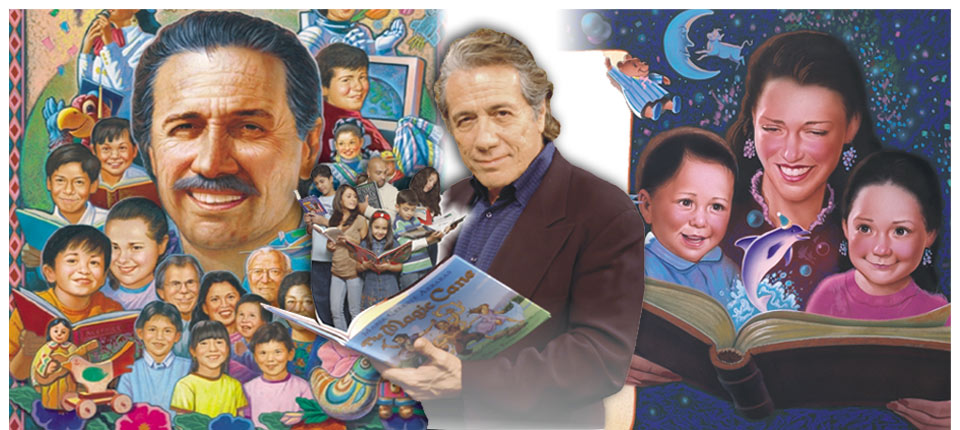



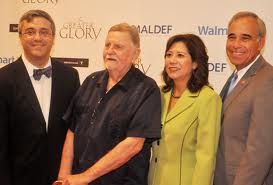

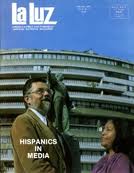 Back in Mexico, he lived in a Oaxacan seacoast village for more than a year. There he fished, played dominoes, drank coconut milk and a little beer and wrote a novel (never published) before returning to Southern California in 1956 with his Zapotec wife Sebastiana Mendoza and the first of their five children, Hector.
Back in Mexico, he lived in a Oaxacan seacoast village for more than a year. There he fished, played dominoes, drank coconut milk and a little beer and wrote a novel (never published) before returning to Southern California in 1956 with his Zapotec wife Sebastiana Mendoza and the first of their five children, Hector.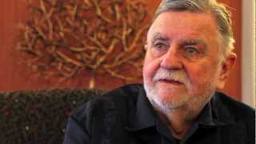 Charlie continues to work with HLNS as editor/publisher with his youngest son, Carlos Emilio
Ericksen-Mendoza, who is the publisher of its newsweekly.
Charlie continues to work with HLNS as editor/publisher with his youngest son, Carlos Emilio
Ericksen-Mendoza, who is the publisher of its newsweekly.
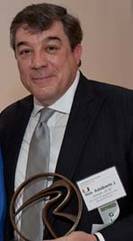
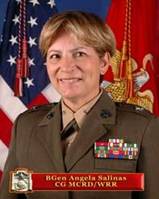
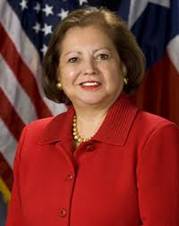
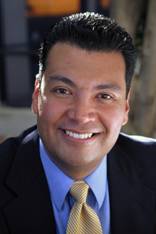
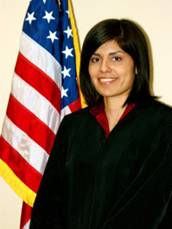
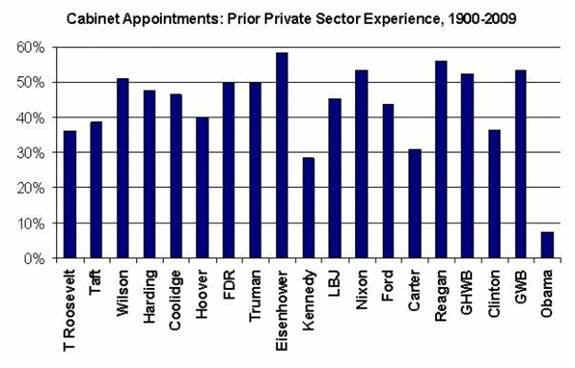
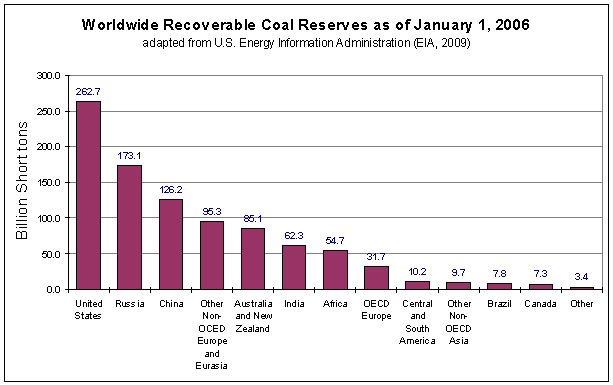


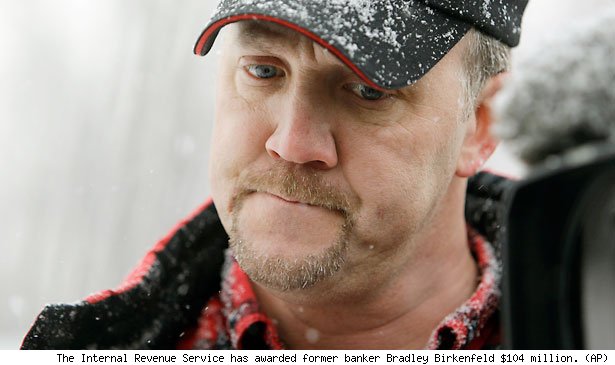
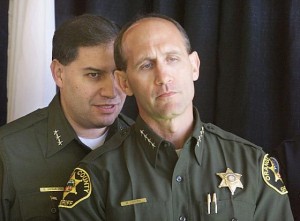

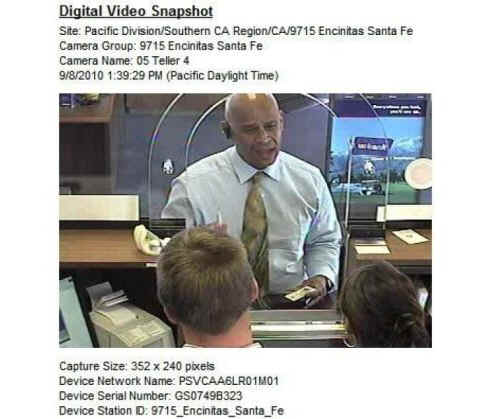



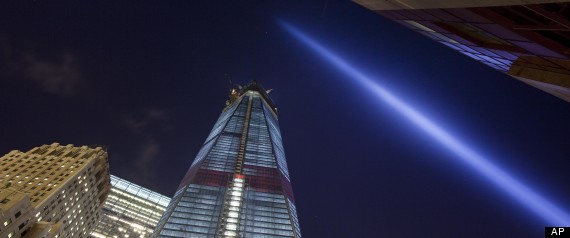


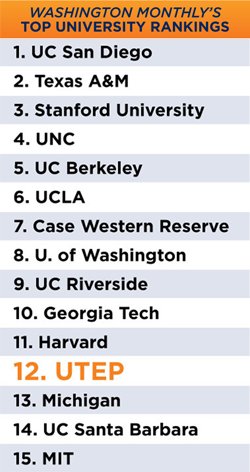



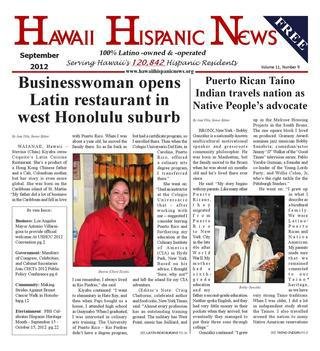
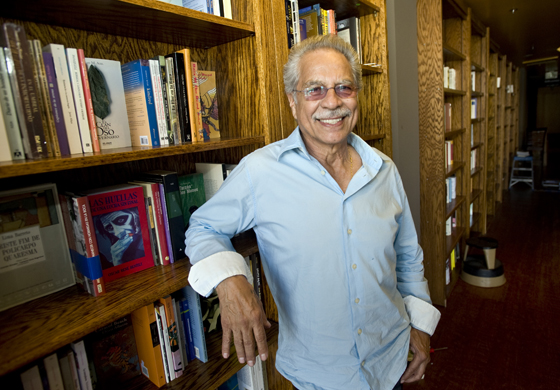
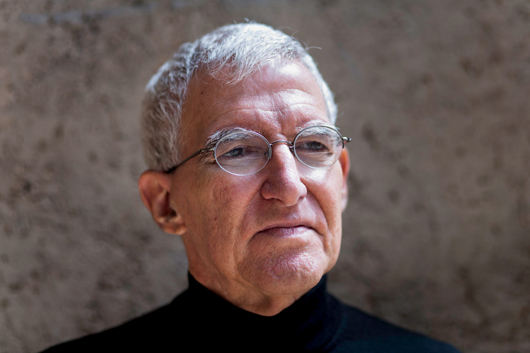

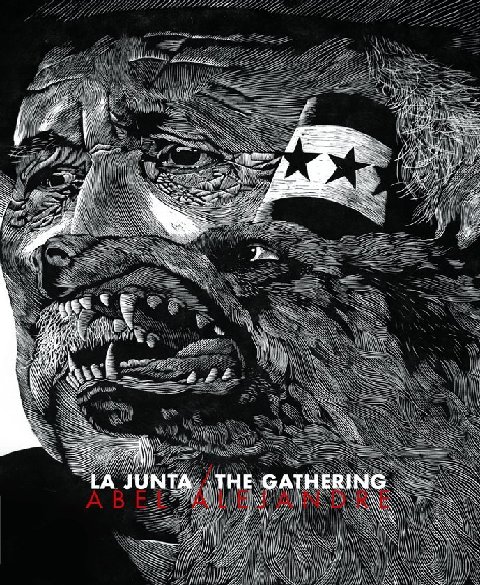
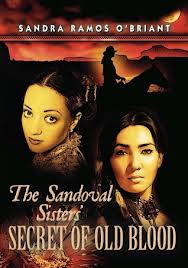

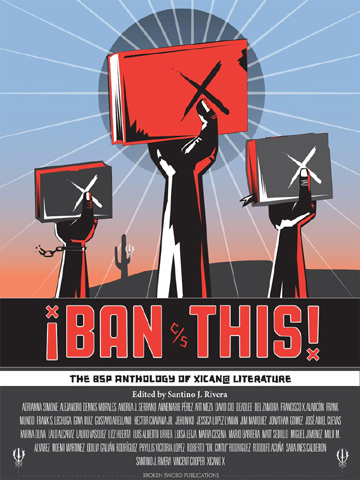
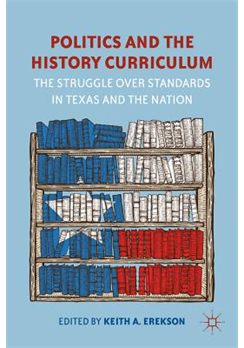
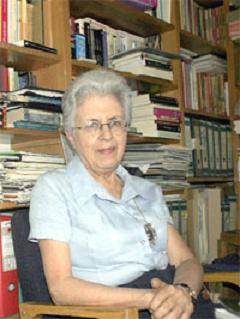



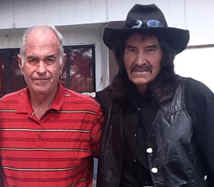
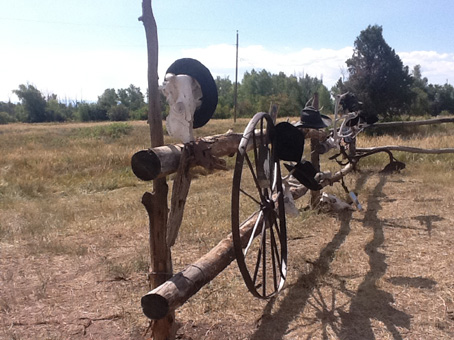
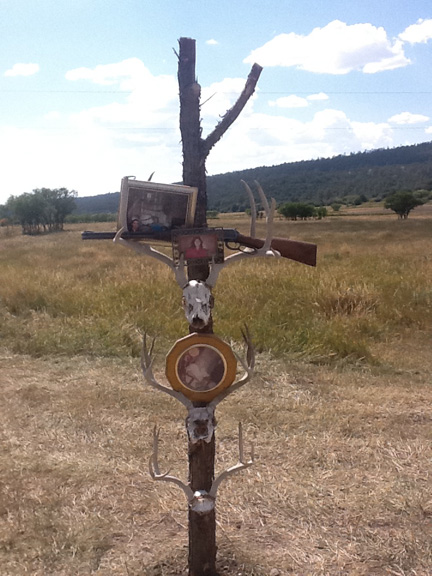
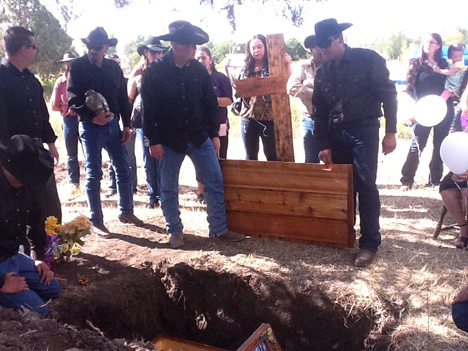

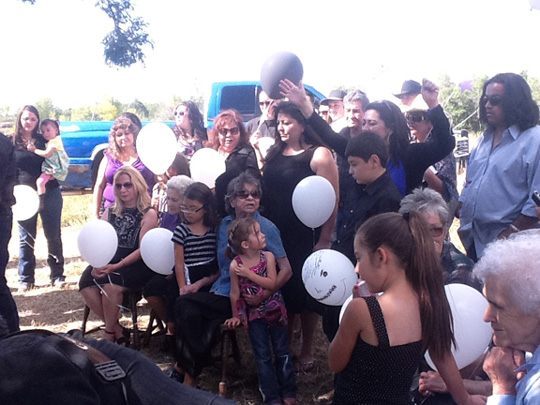





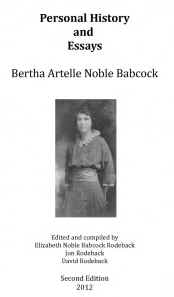
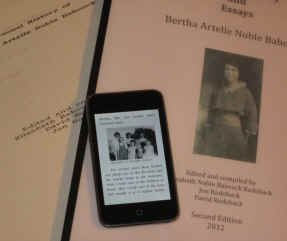

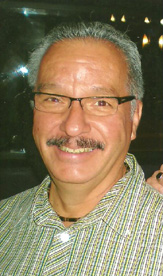
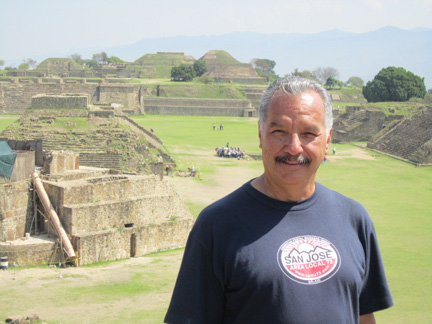
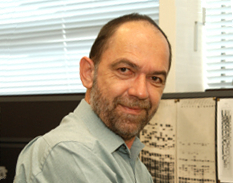
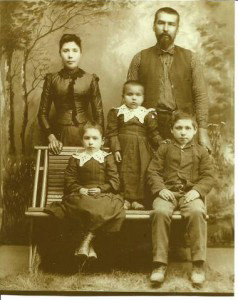



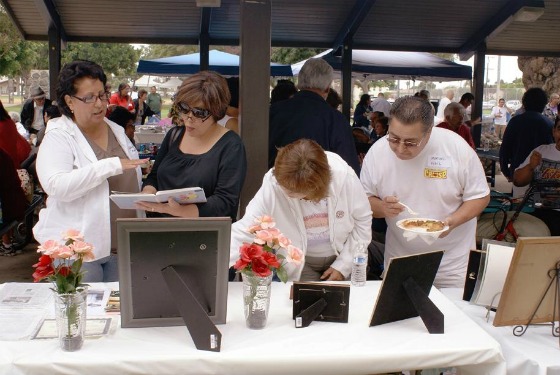

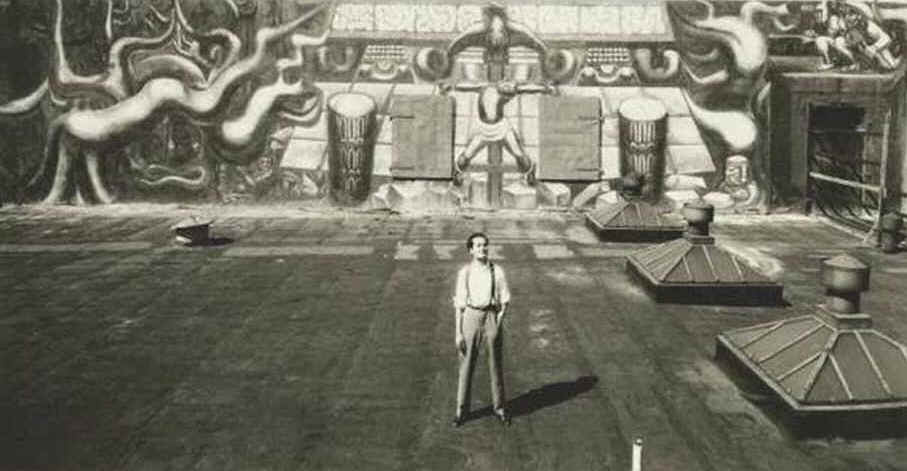
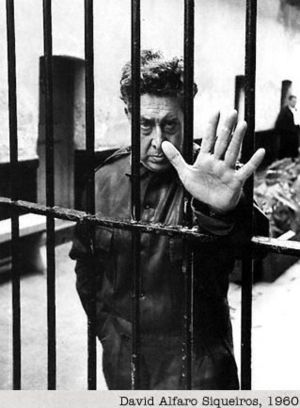
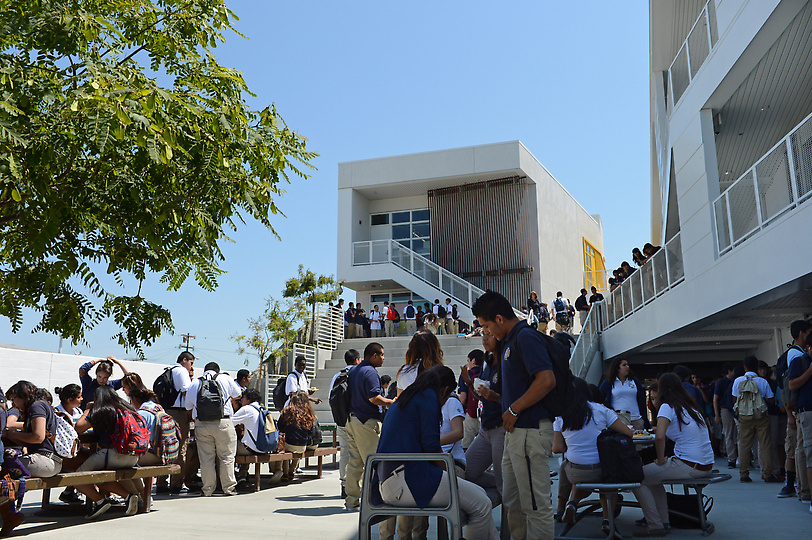
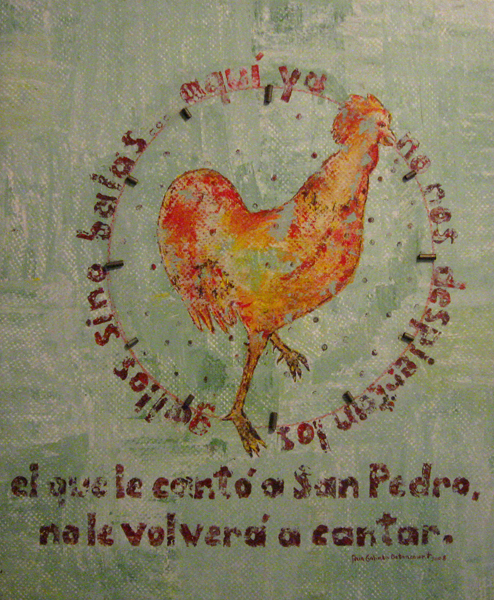

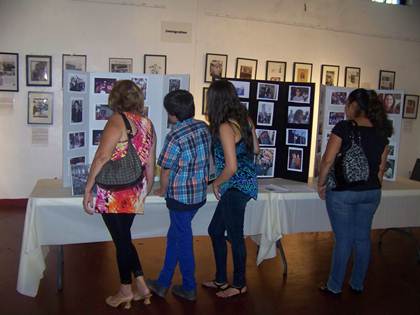
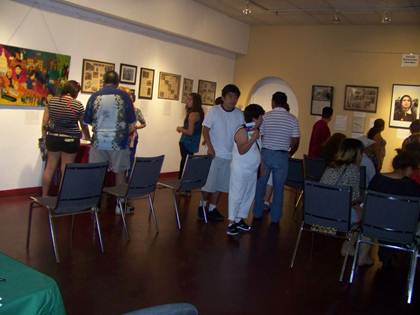

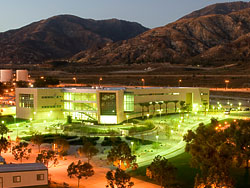
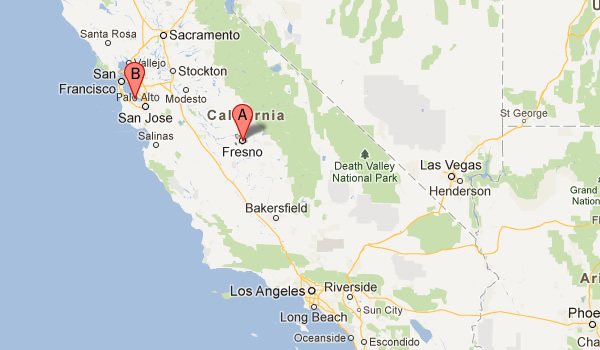




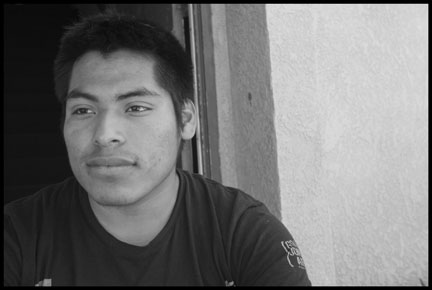 SANTA
MARIA, CA -- Growing up in a farmworking family -- well, it's everything
I ever knew. Whenever I got out of school, it was straight to the fields
to get a little bit of money and help the family out. That's pretty much
the only job I ever knew. In general we would work on the weekends and
in the summers. When I was younger it would be right after school, and
then during vacations.
SANTA
MARIA, CA -- Growing up in a farmworking family -- well, it's everything
I ever knew. Whenever I got out of school, it was straight to the fields
to get a little bit of money and help the family out. That's pretty much
the only job I ever knew. In general we would work on the weekends and
in the summers. When I was younger it would be right after school, and
then during vacations.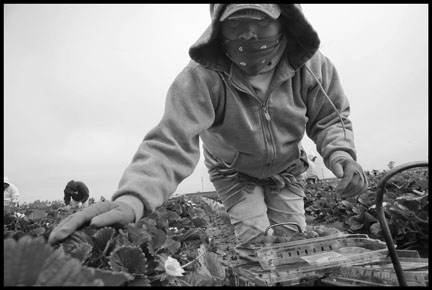
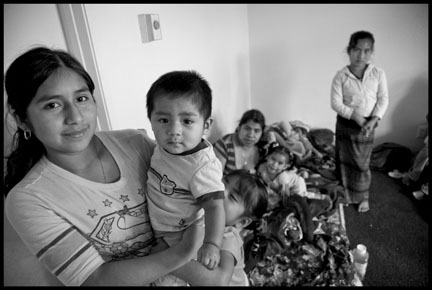 Sabina
Cayetano and her son Aron live with other members of her family in one
room in an apartment in Santa Maria. Many Mixtec families live here, and
in the spring and summer they work picking strawberries.
Sabina
Cayetano and her son Aron live with other members of her family in one
room in an apartment in Santa Maria. Many Mixtec families live here, and
in the spring and summer they work picking strawberries.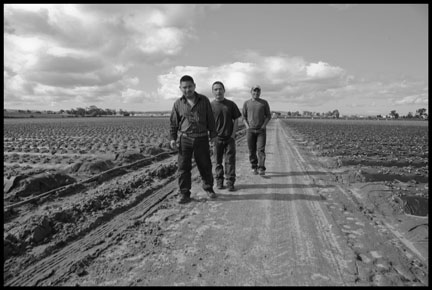 Three
Zapotec farmworkers from Santa Maria Sola in Oaxaca walk out of a field,
after having asked the foreman of a crew picking strawberries if there
was any work for them.
Three
Zapotec farmworkers from Santa Maria Sola in Oaxaca walk out of a field,
after having asked the foreman of a crew picking strawberries if there
was any work for them.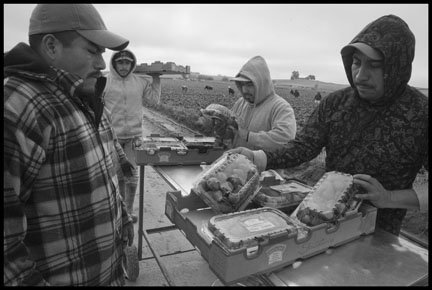
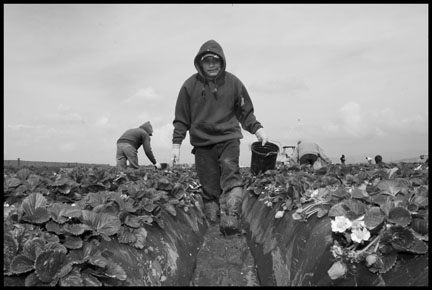
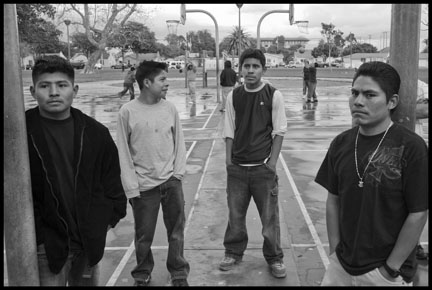
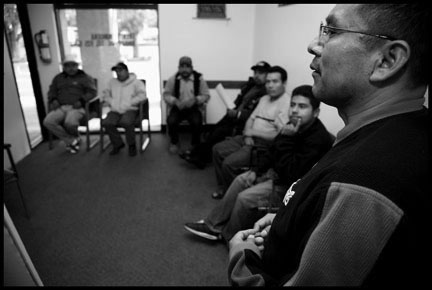 Jose
Estrada and migrants from the Oaxacan town of San Juan Piñas conduct a
meeting in Mixteco of their hometown committee, in the office of the
Frente Indigena de Organizaciones Binacionales.
Jose
Estrada and migrants from the Oaxacan town of San Juan Piñas conduct a
meeting in Mixteco of their hometown committee, in the office of the
Frente Indigena de Organizaciones Binacionales.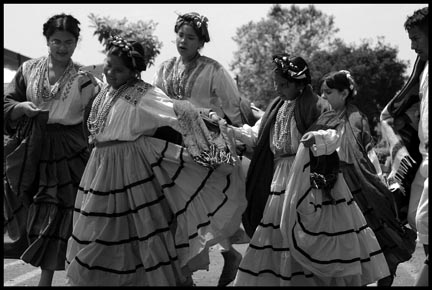
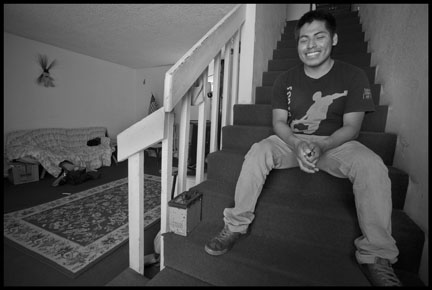 Javier
Mondar-Flores Lopez, in the apartment where he lives with his mom and
sisters.
Javier
Mondar-Flores Lopez, in the apartment where he lives with his mom and
sisters.
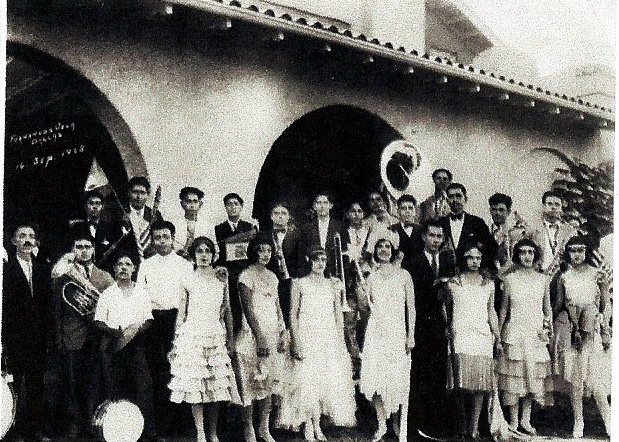
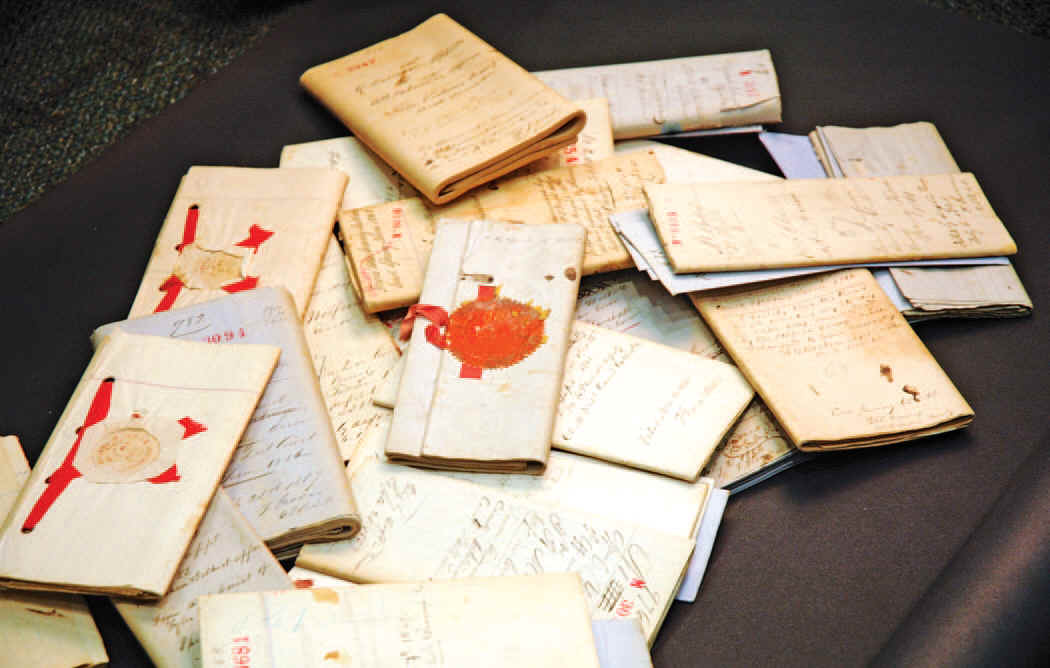
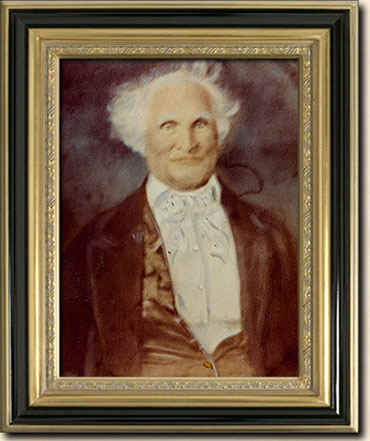
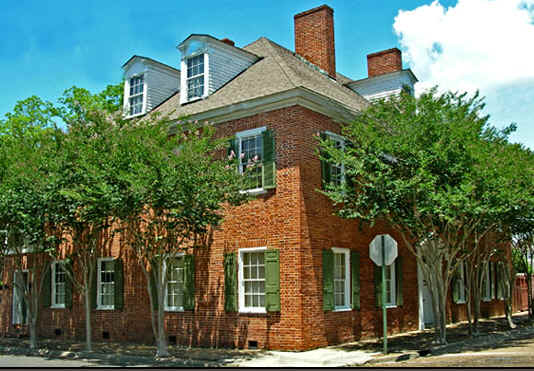


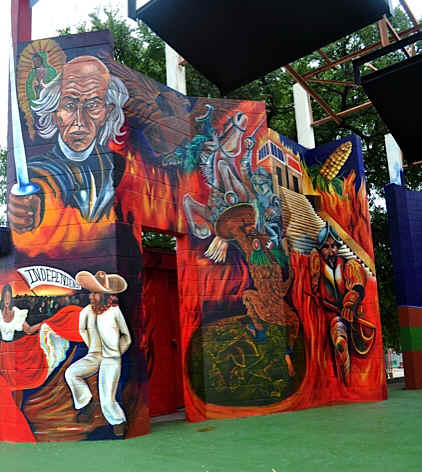
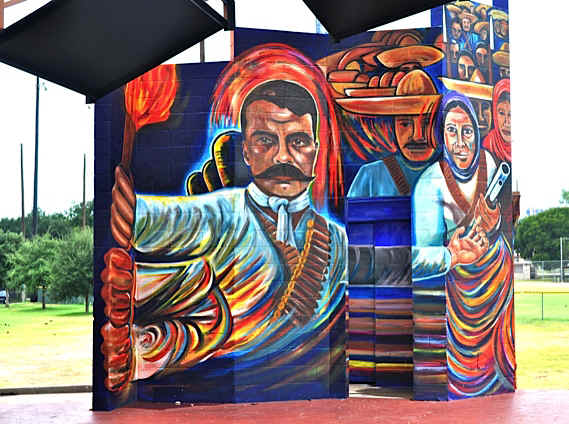

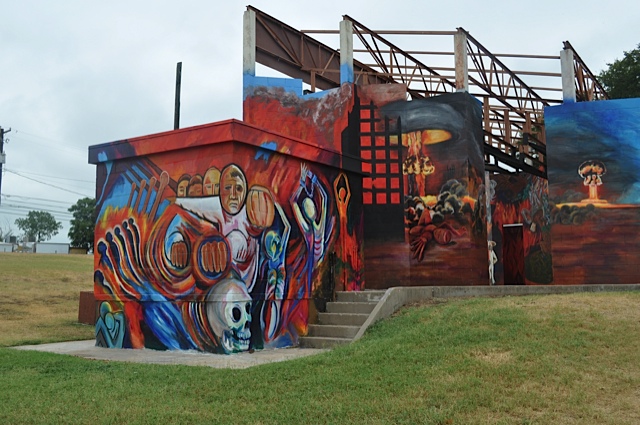
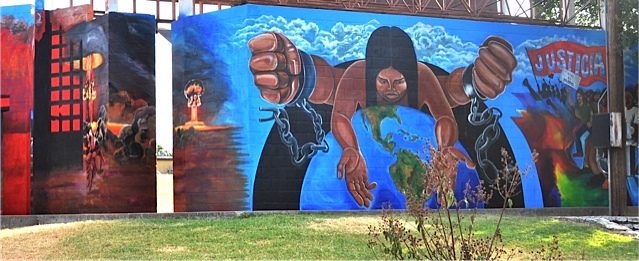

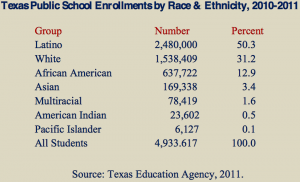

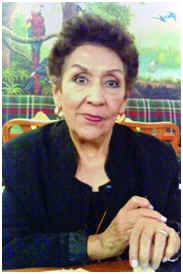
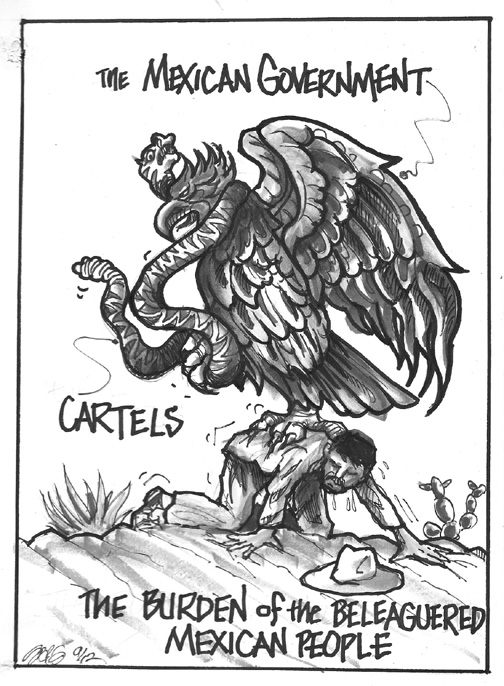
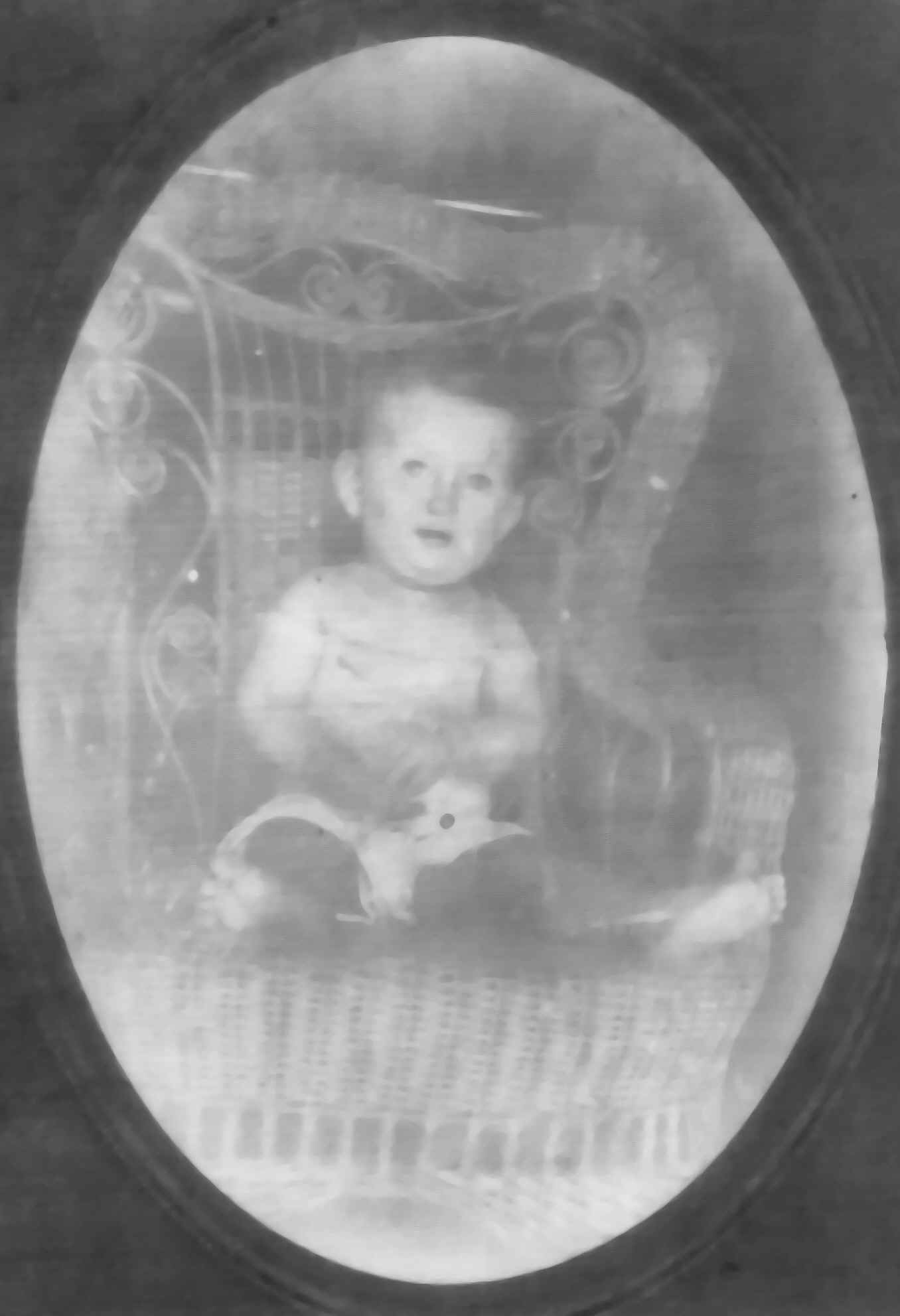
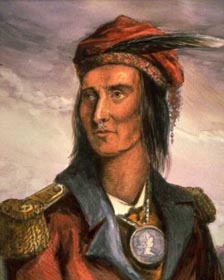
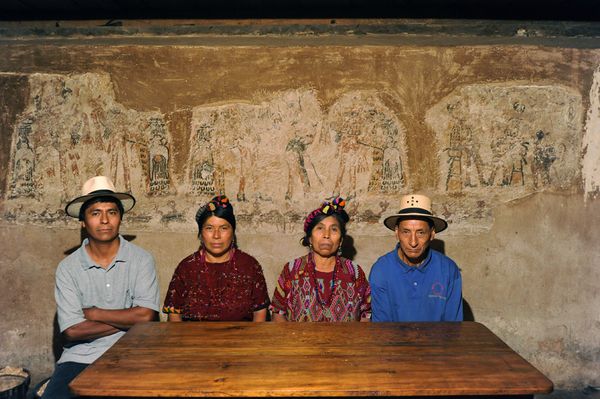
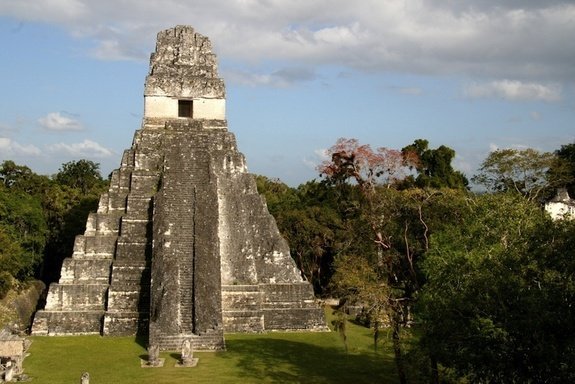
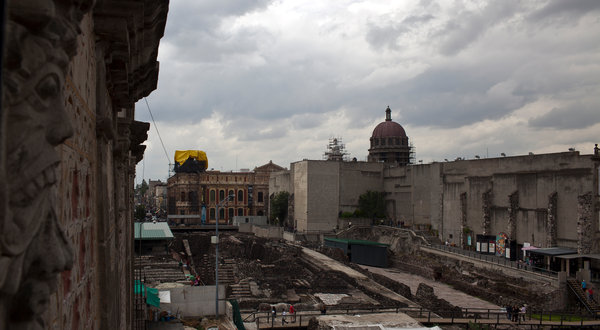


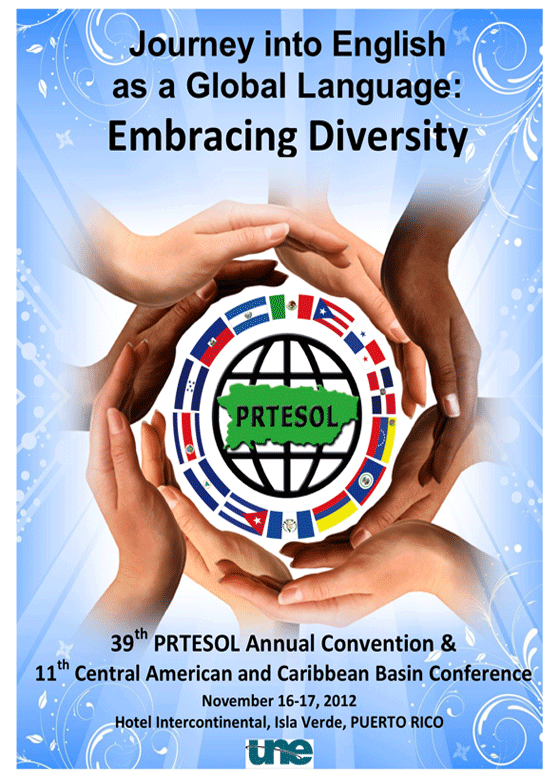
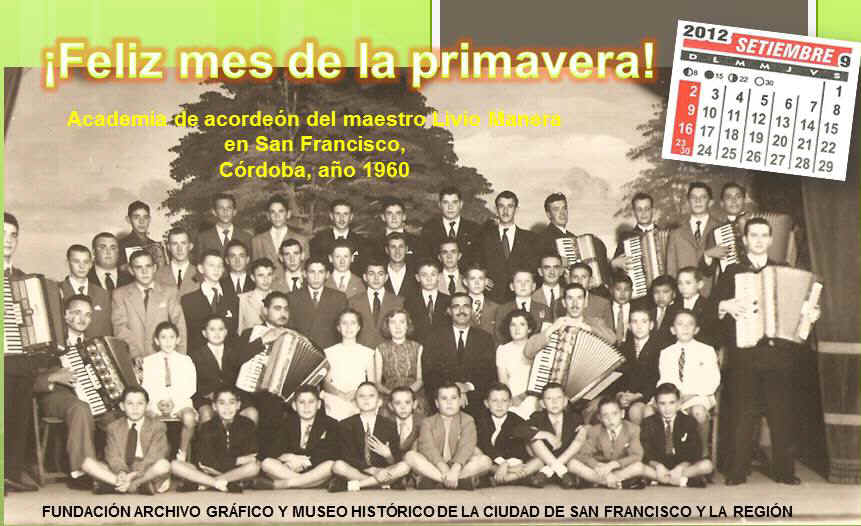
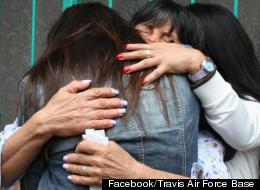
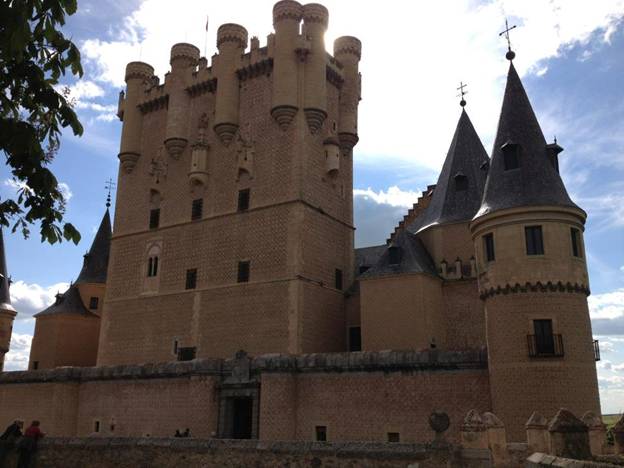

THE FOLLOWING OBITUARY WAS POSTED IN THE FRESNO PAPER RECENTLY
Dr. Cecilio Orozco, Father, Husband, Mentor, died September 6, 2012 in Fresno, California. Born October 4, 1928 in Glendale CA, was preceded in death by Mother Angela, Father Cecilio and Sister Rafaela (Lala). He is survived by 2 siblings, Lola (Rudy) and Rafaela. While married to Natalie (Miller) they had 2 children Cecil (Patty) and Ronald (Beth). Cecilio and his wife of 36 years Laura (Arguello) have 2 children Matthew Navo (Tylee) and Valente.
Cecilio will be missed by his 8 grandchildren Cecil Craig (Lisa), Brian James (Abbe Rae), Xochitl (Matt), Lara (Joel), Samantha, Kennedy, Britton, and Trent, 3 step-grandchildren Sam, Joe, Mattie, and 2 great-grandchildren Lily and Owen, and many nieces, nephews and cousins.